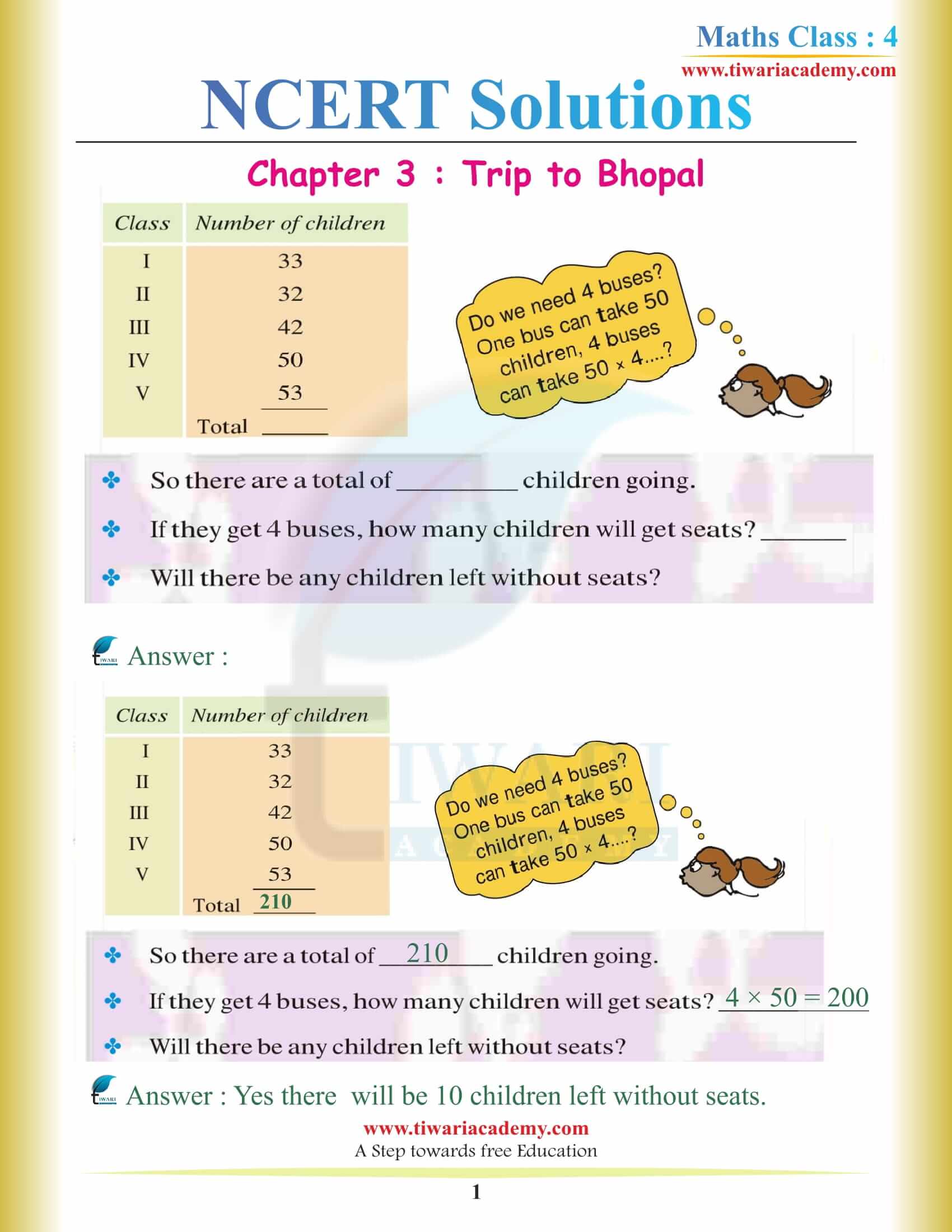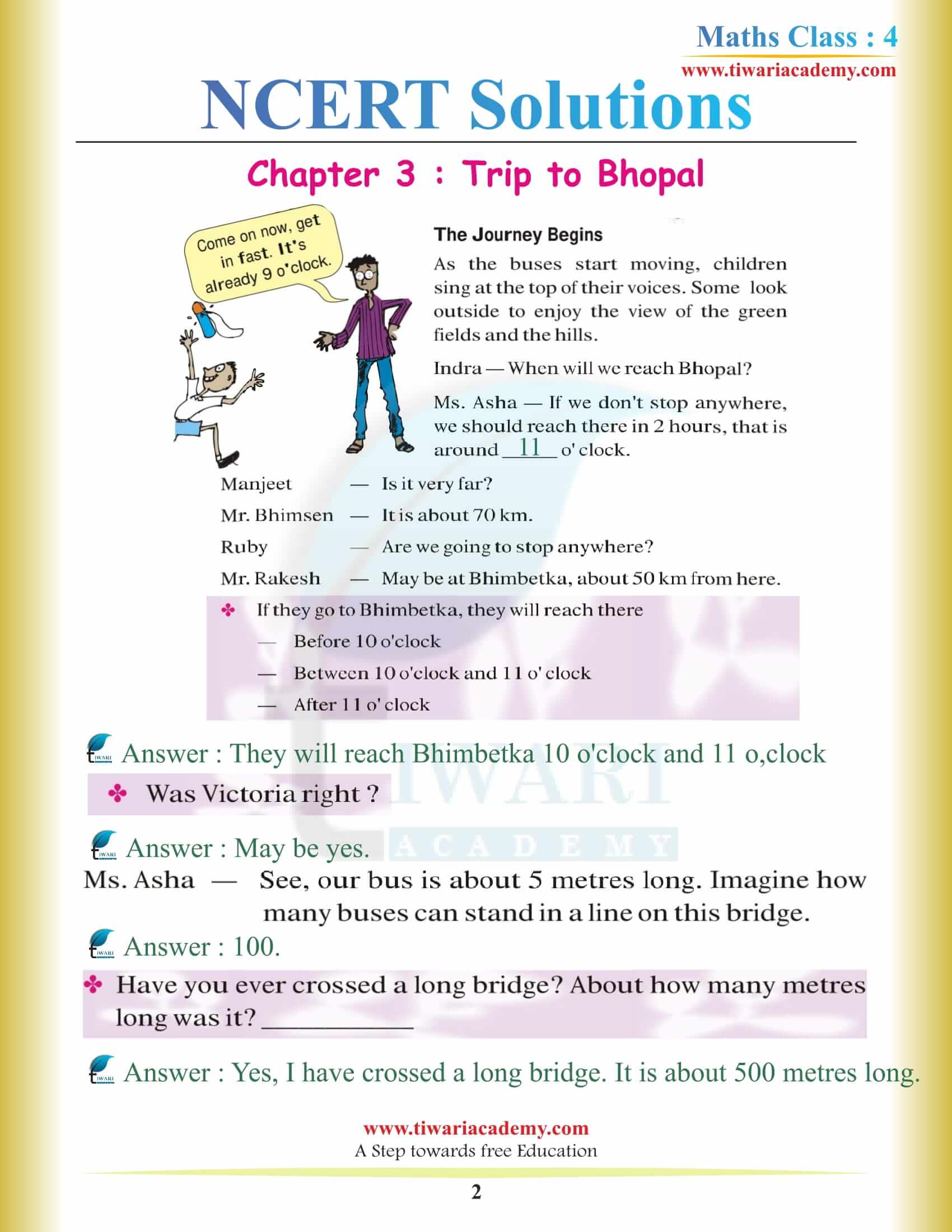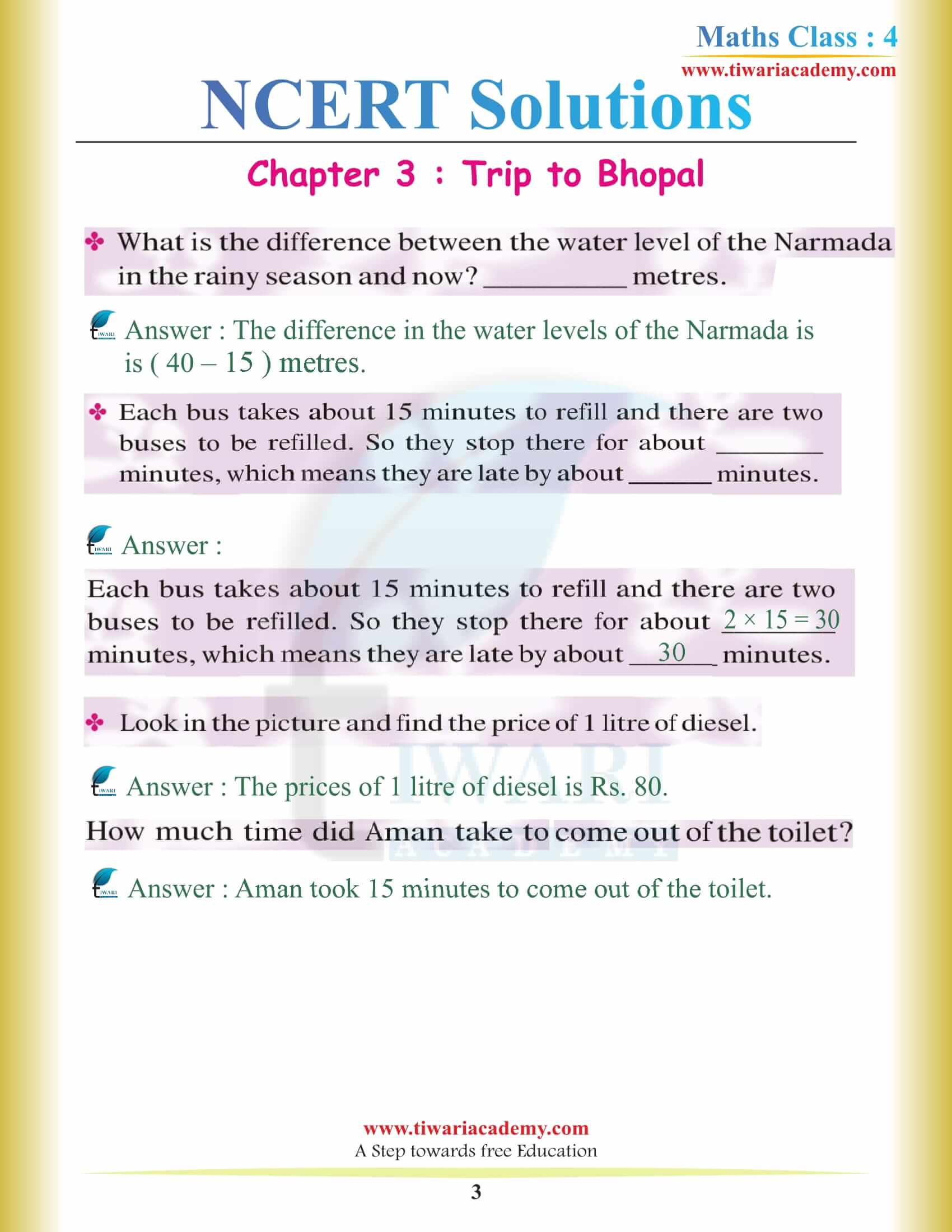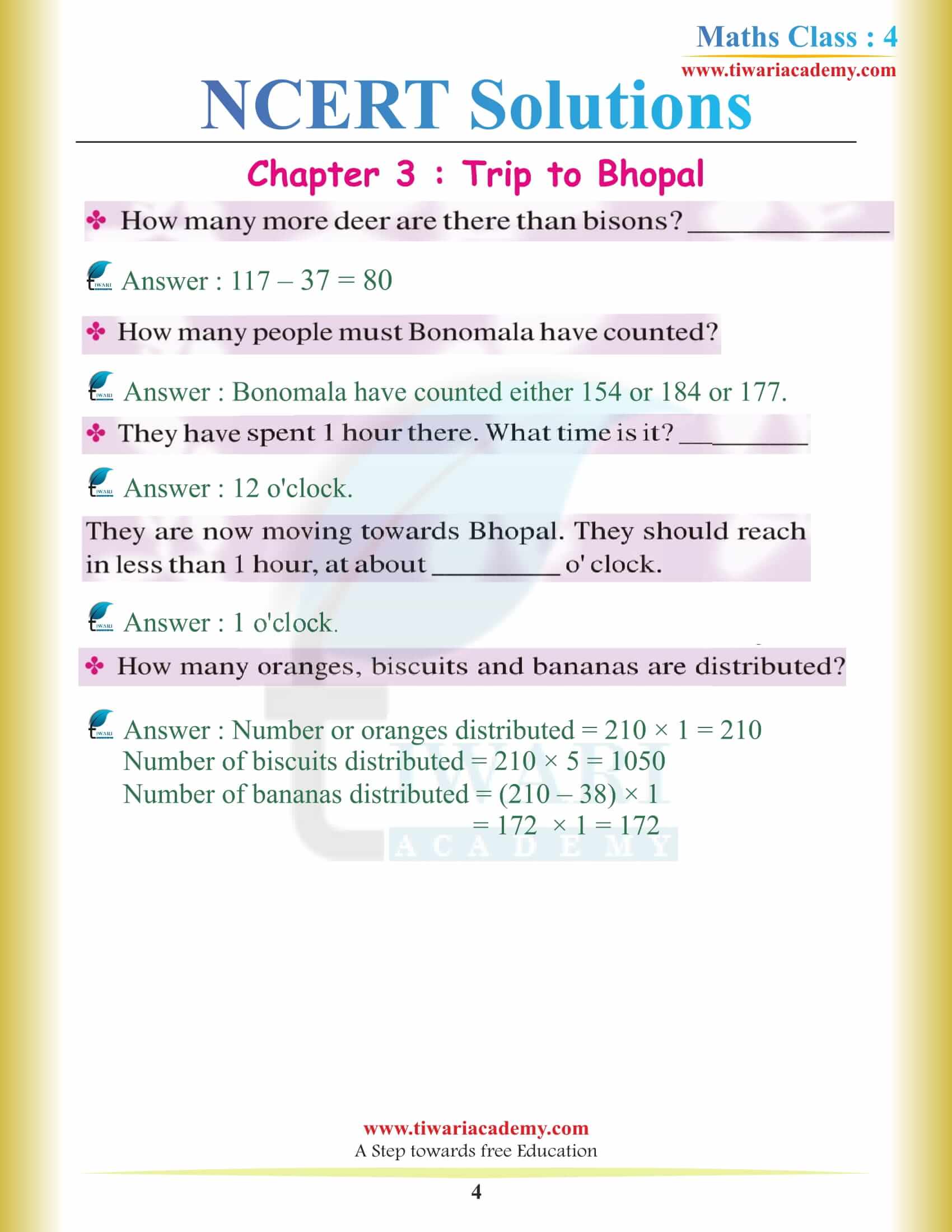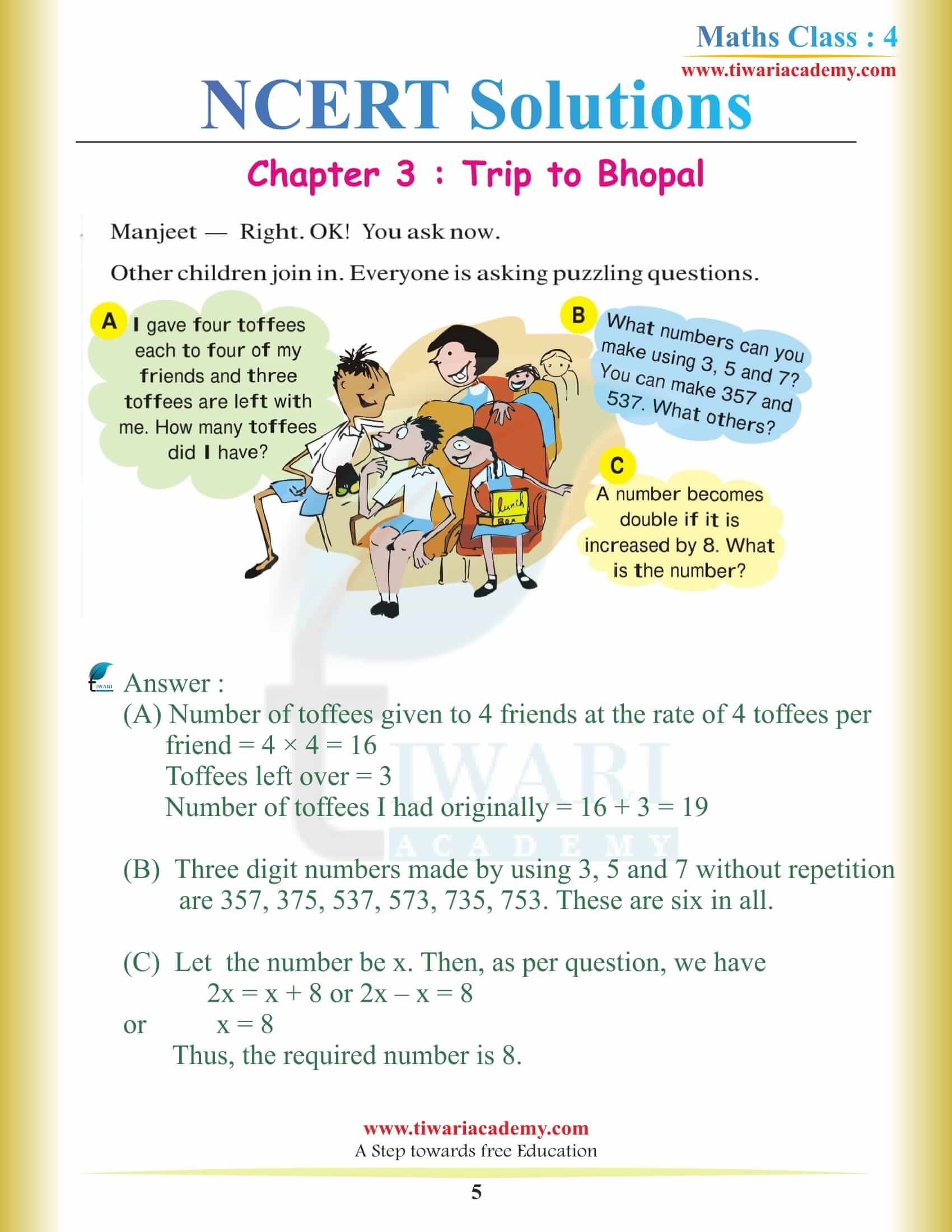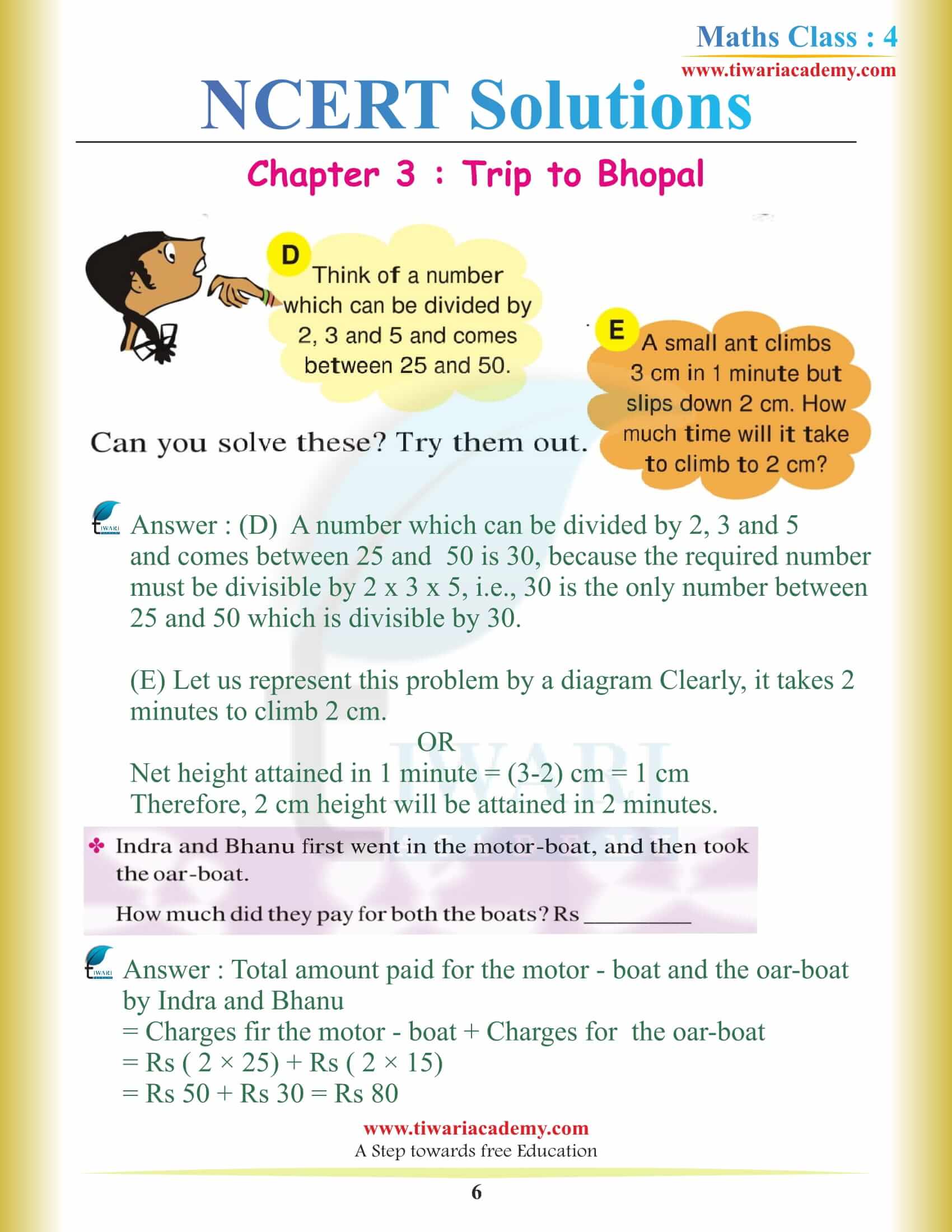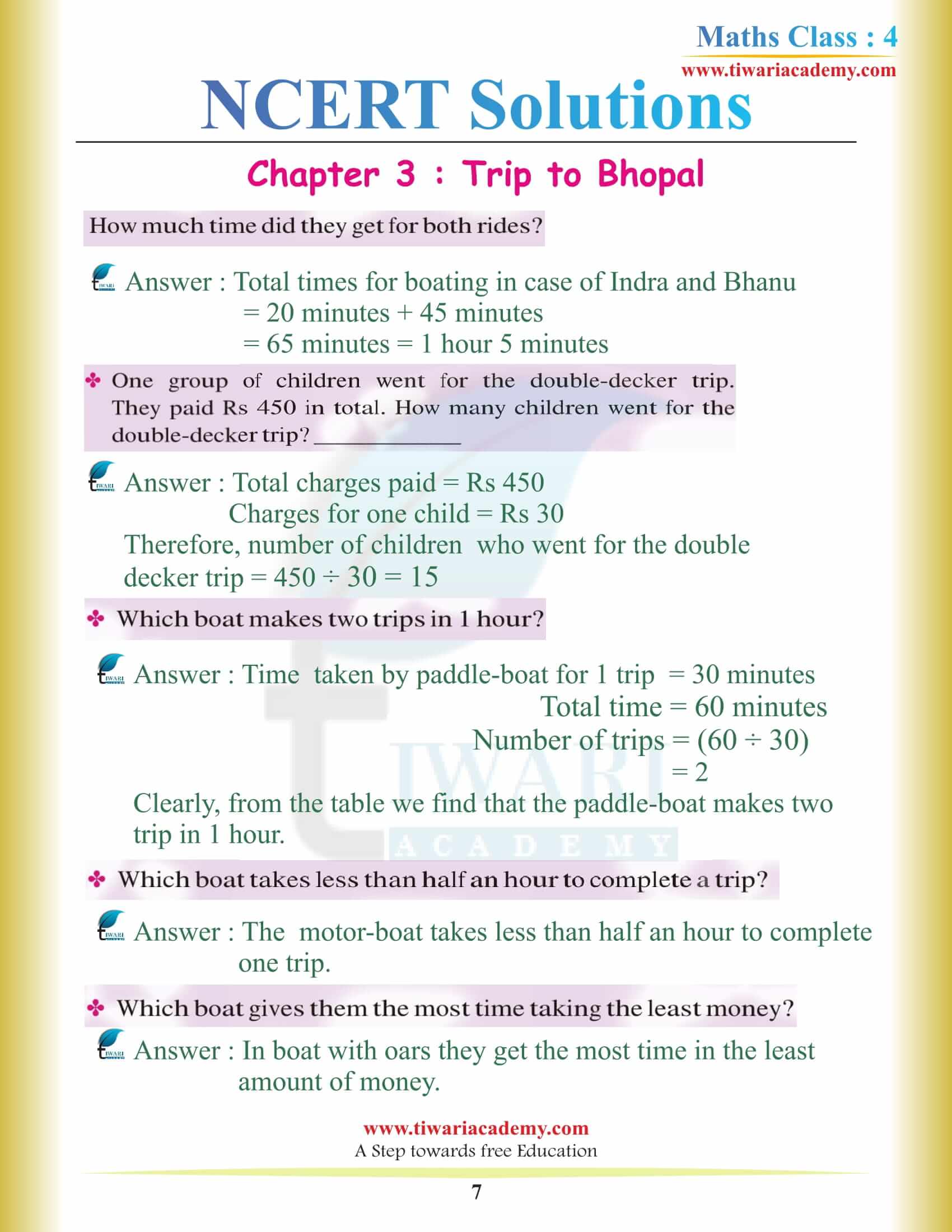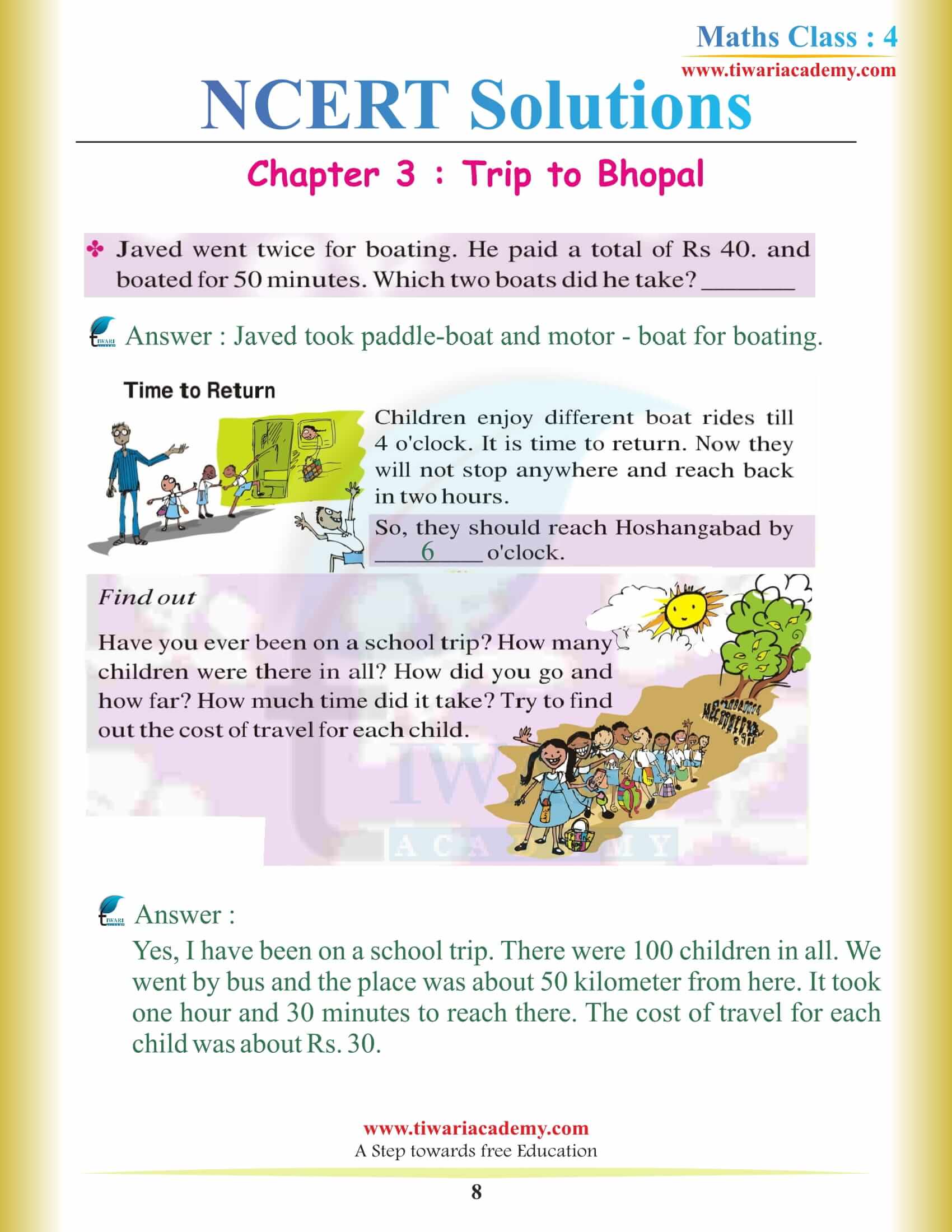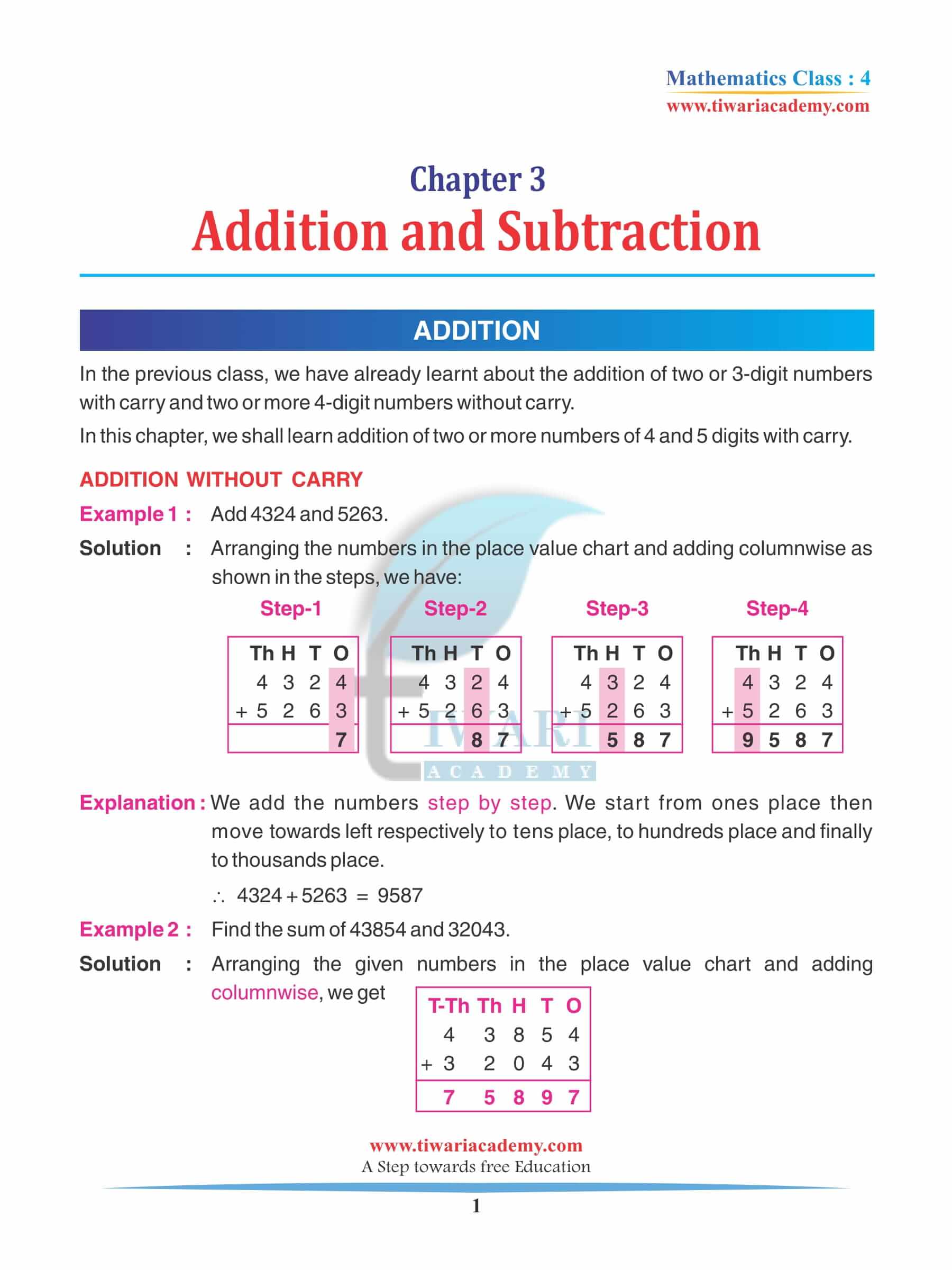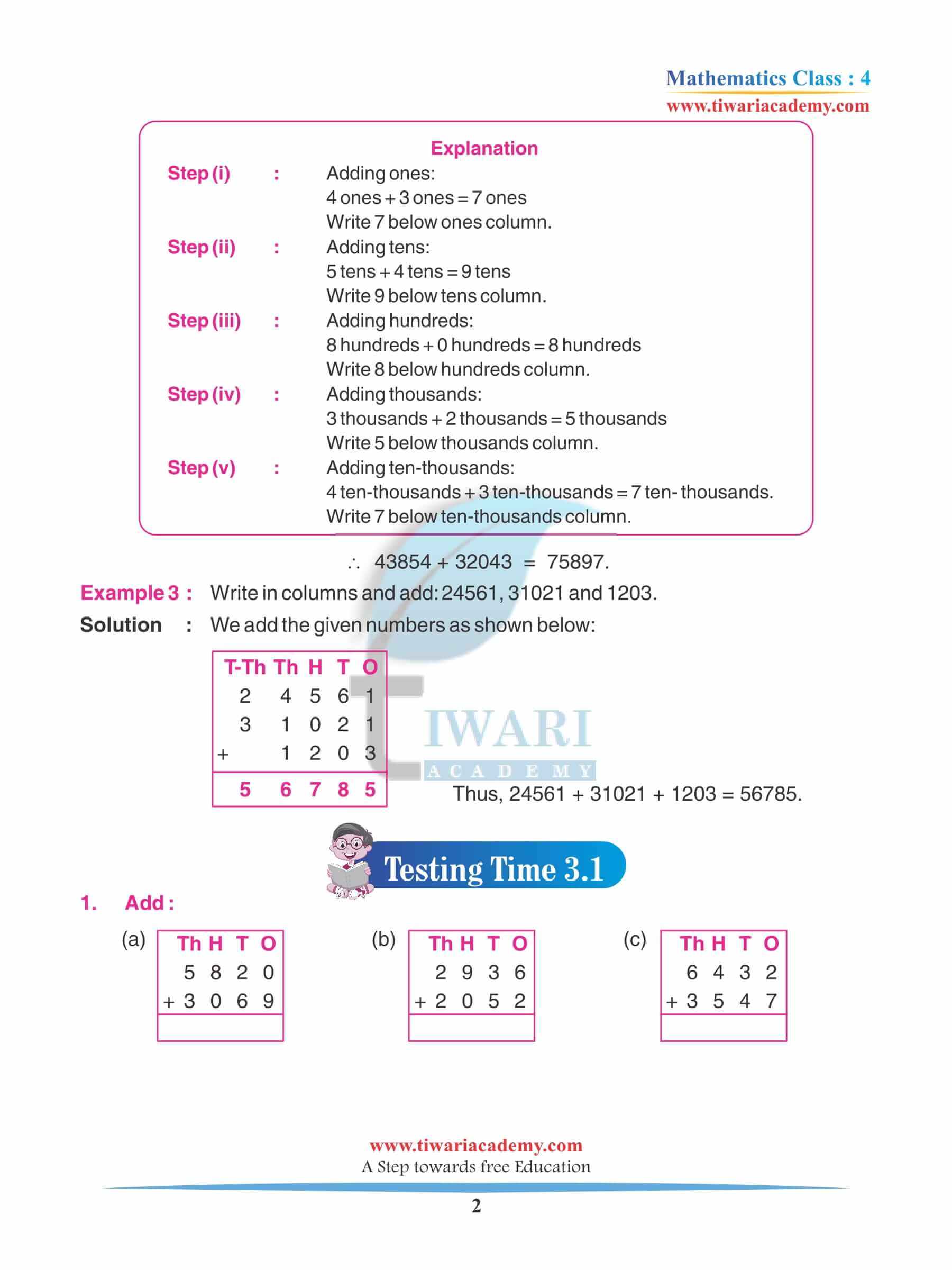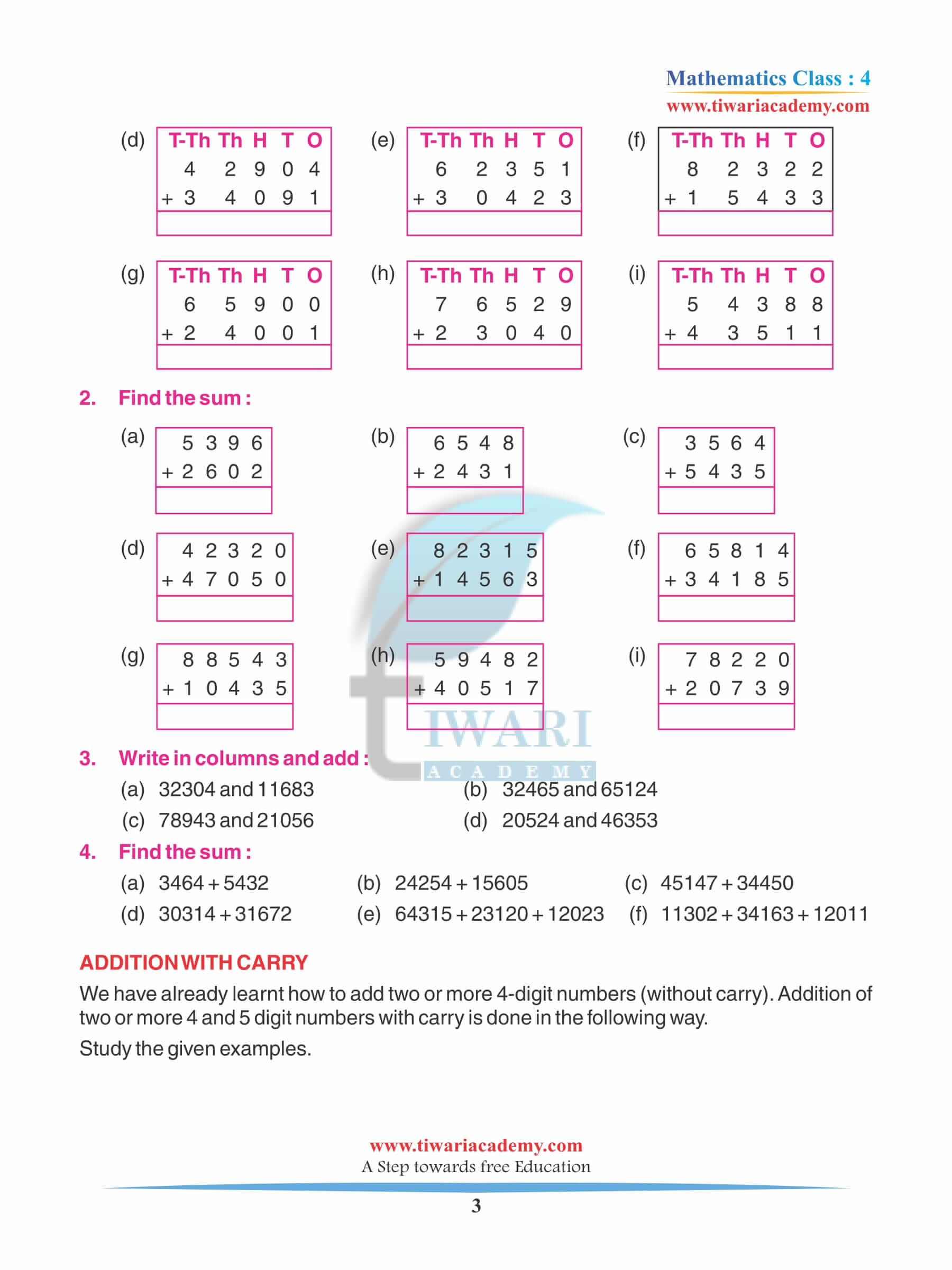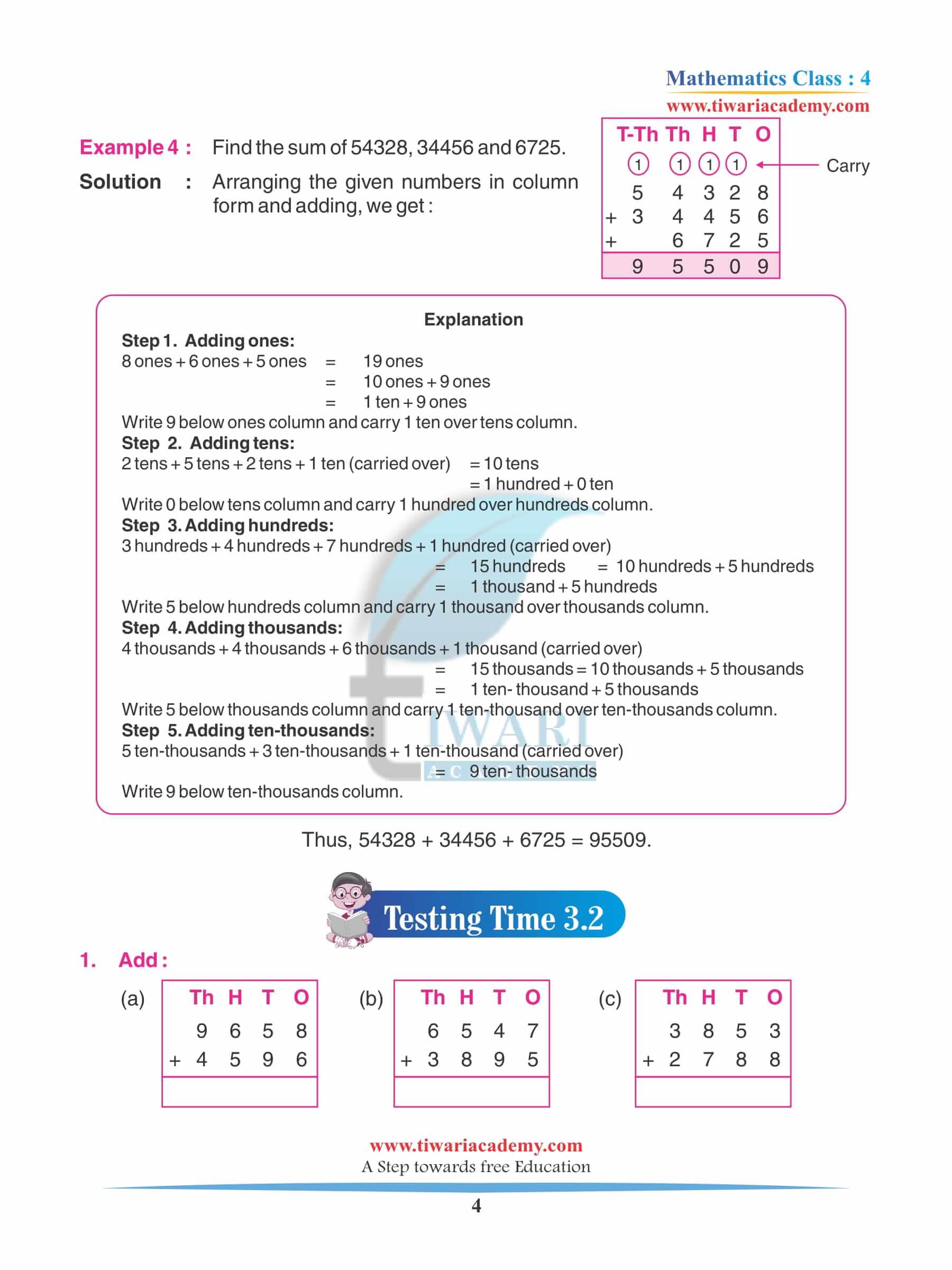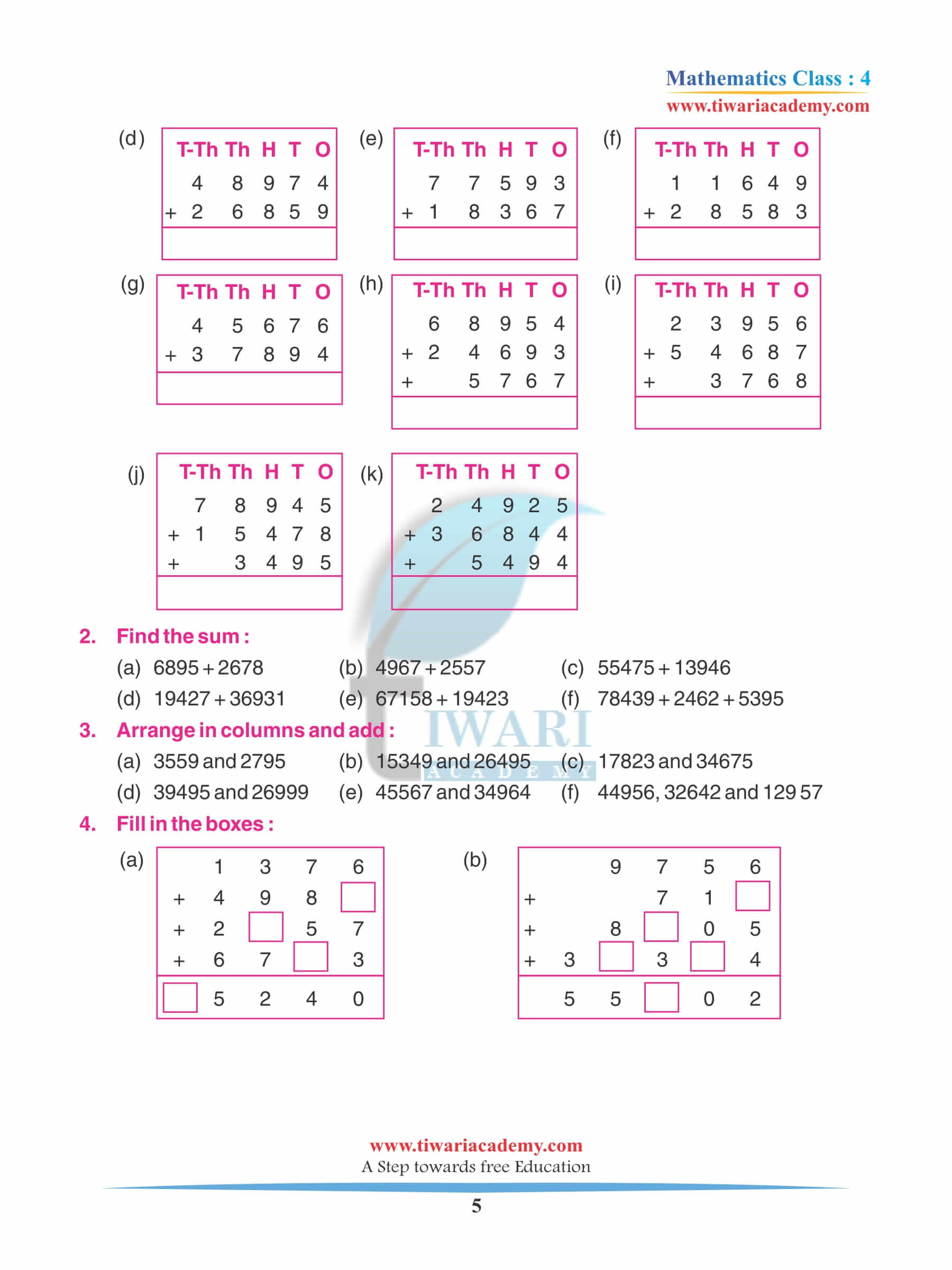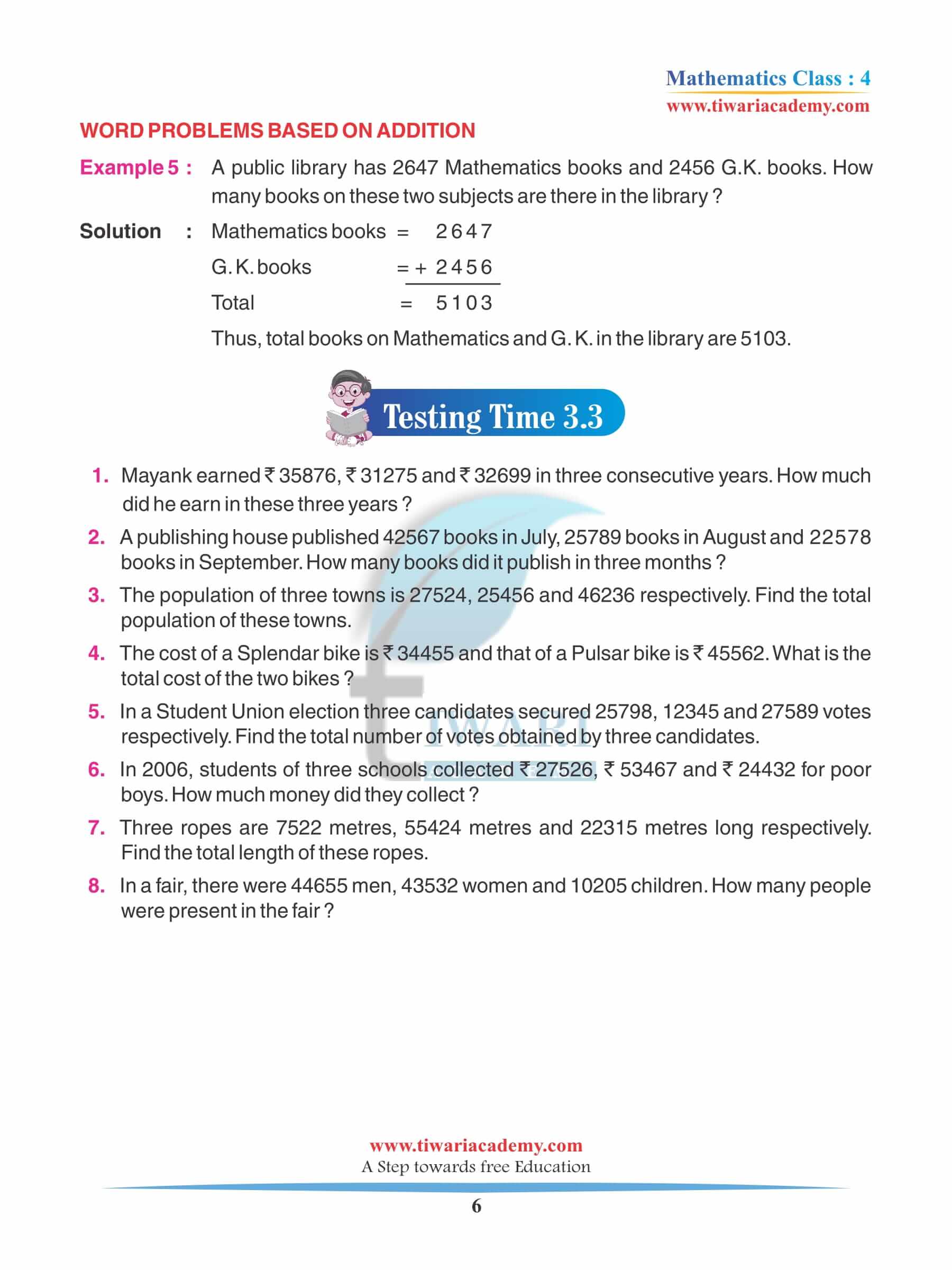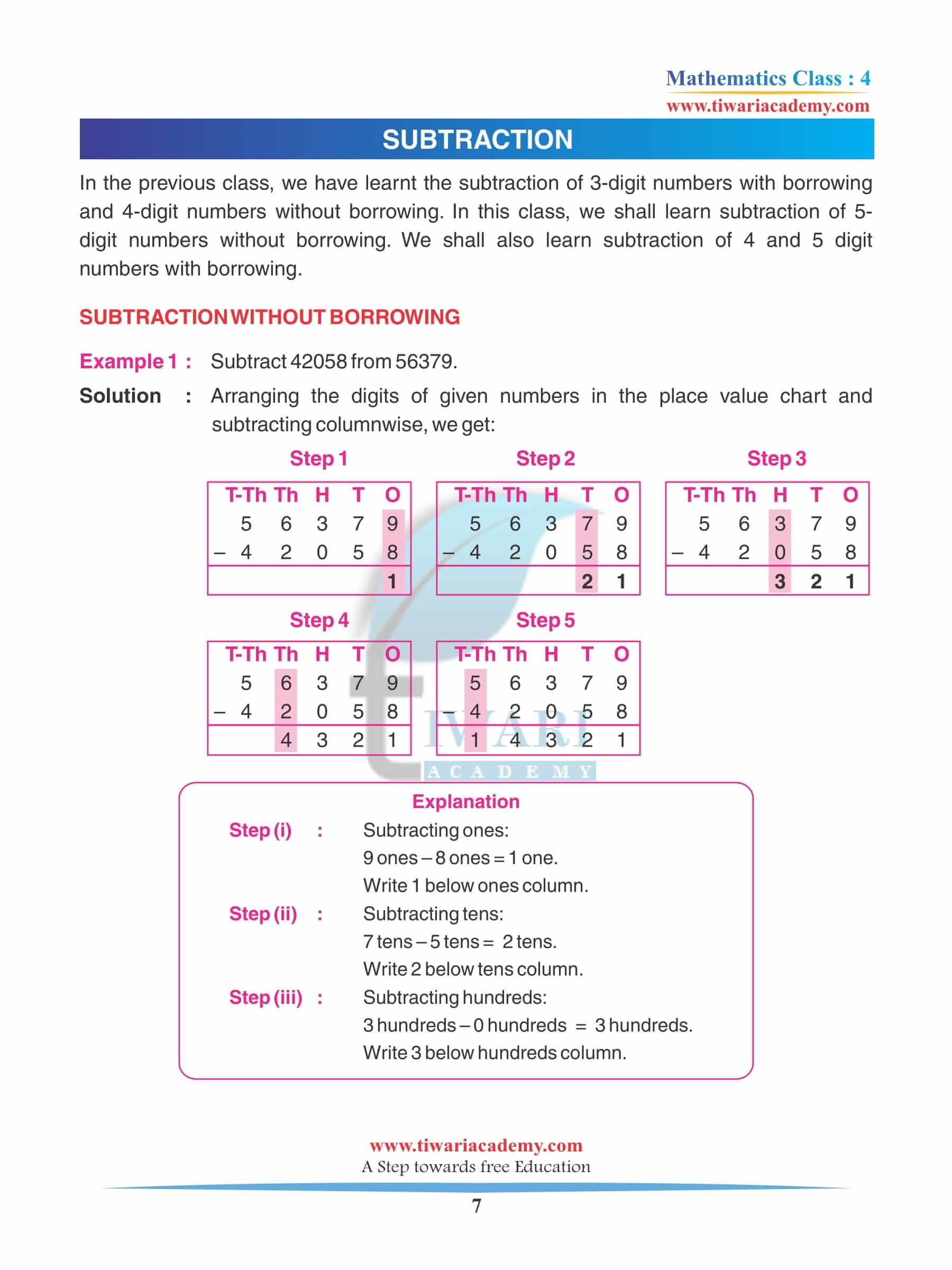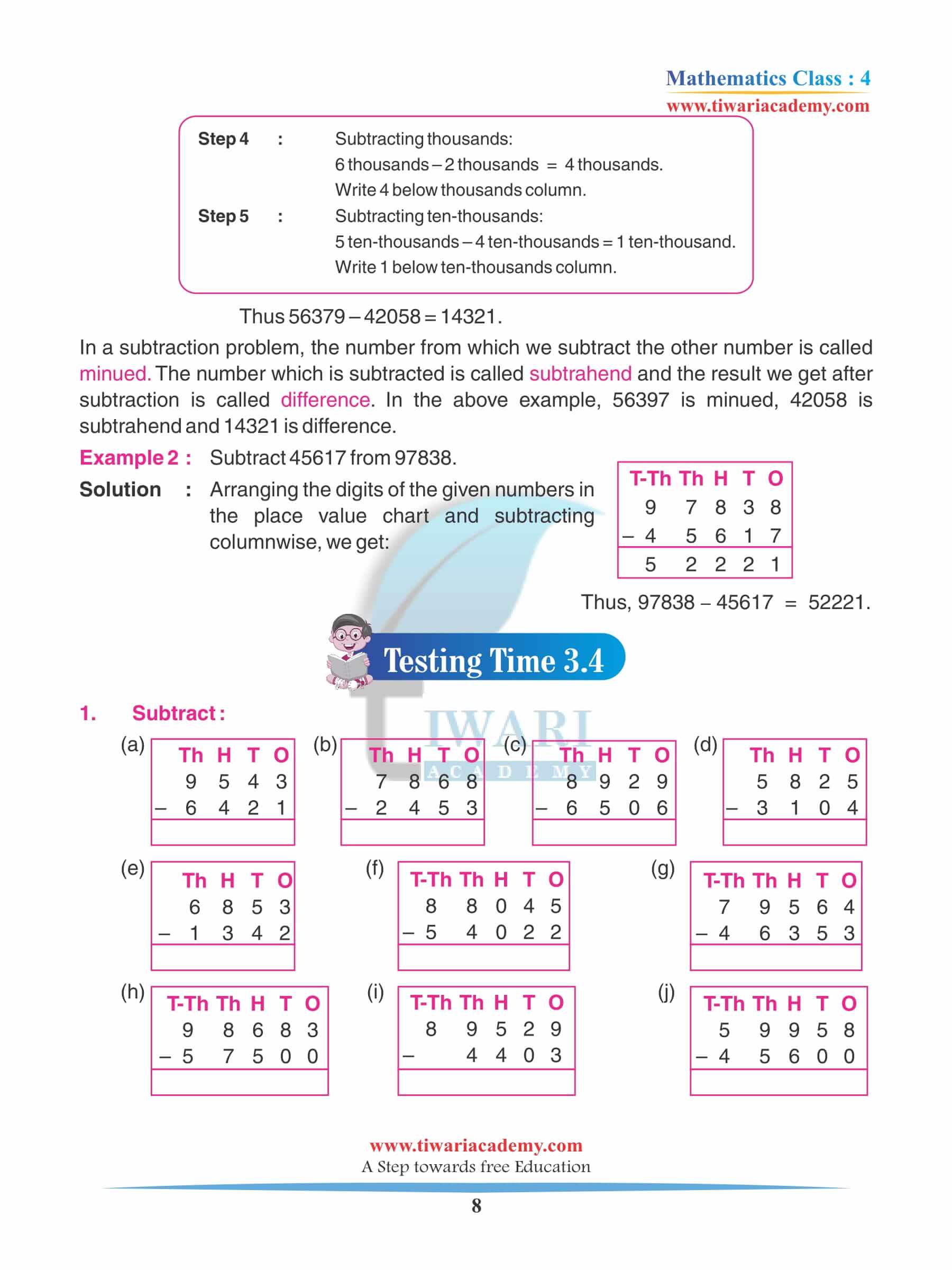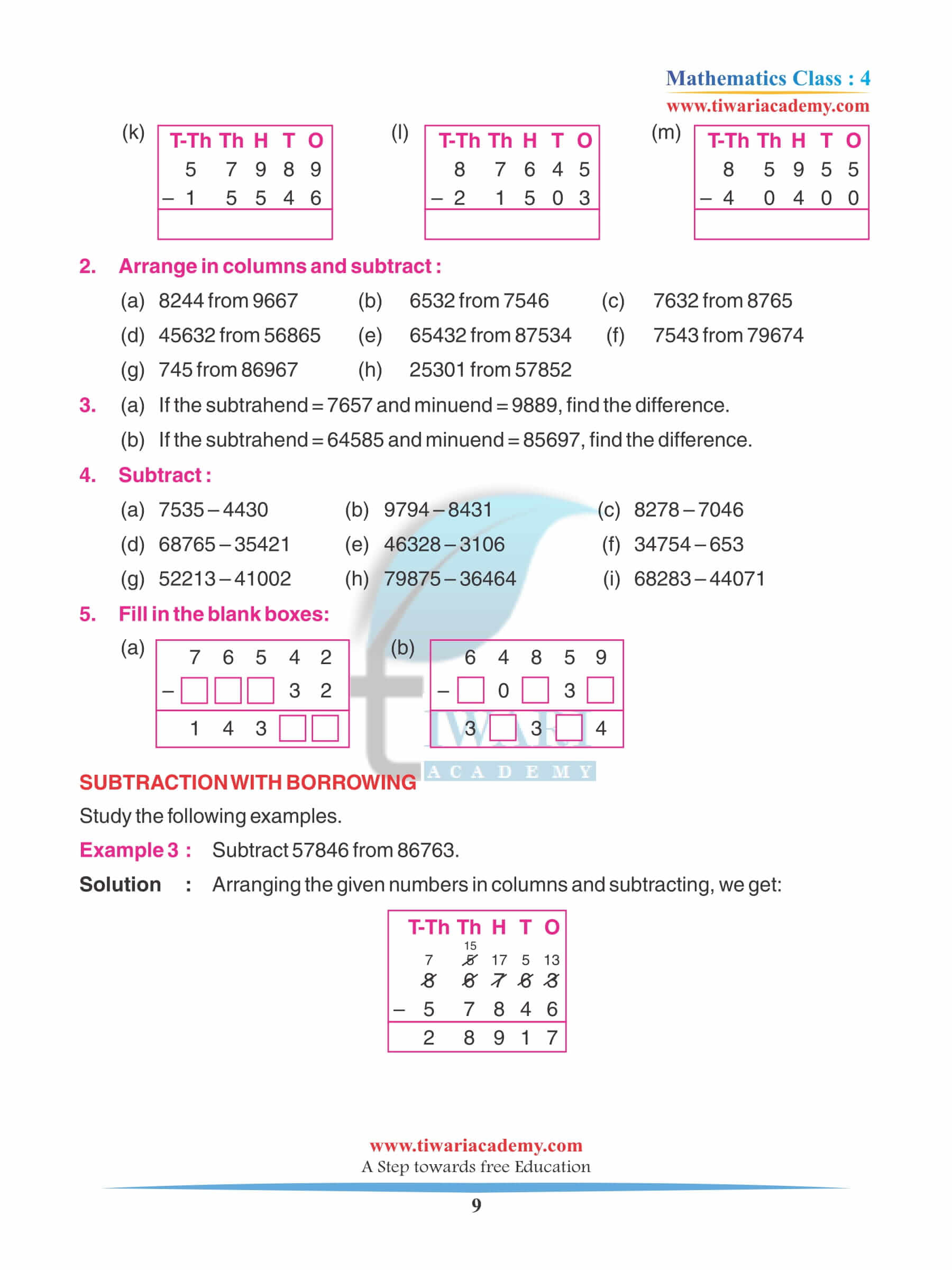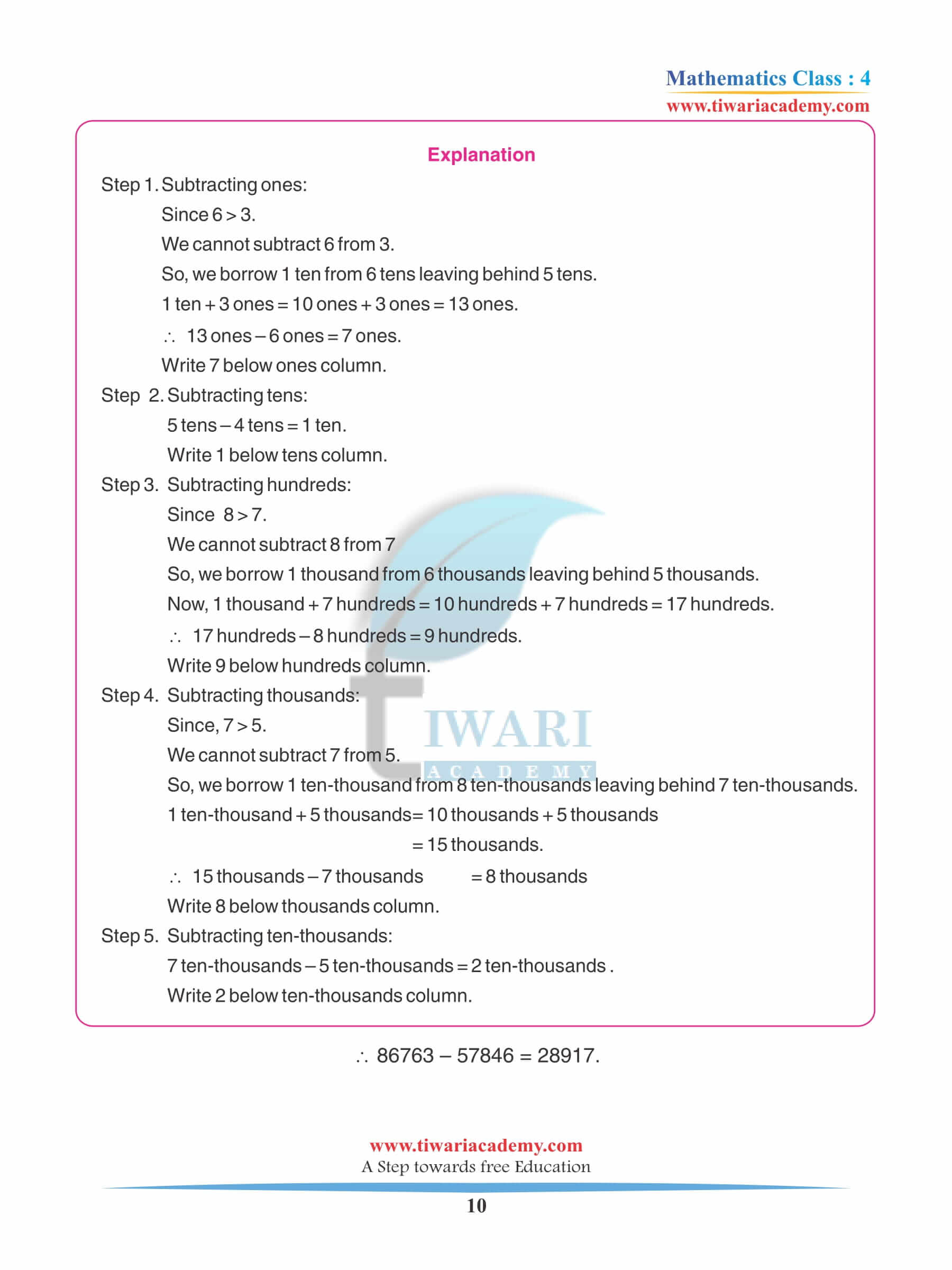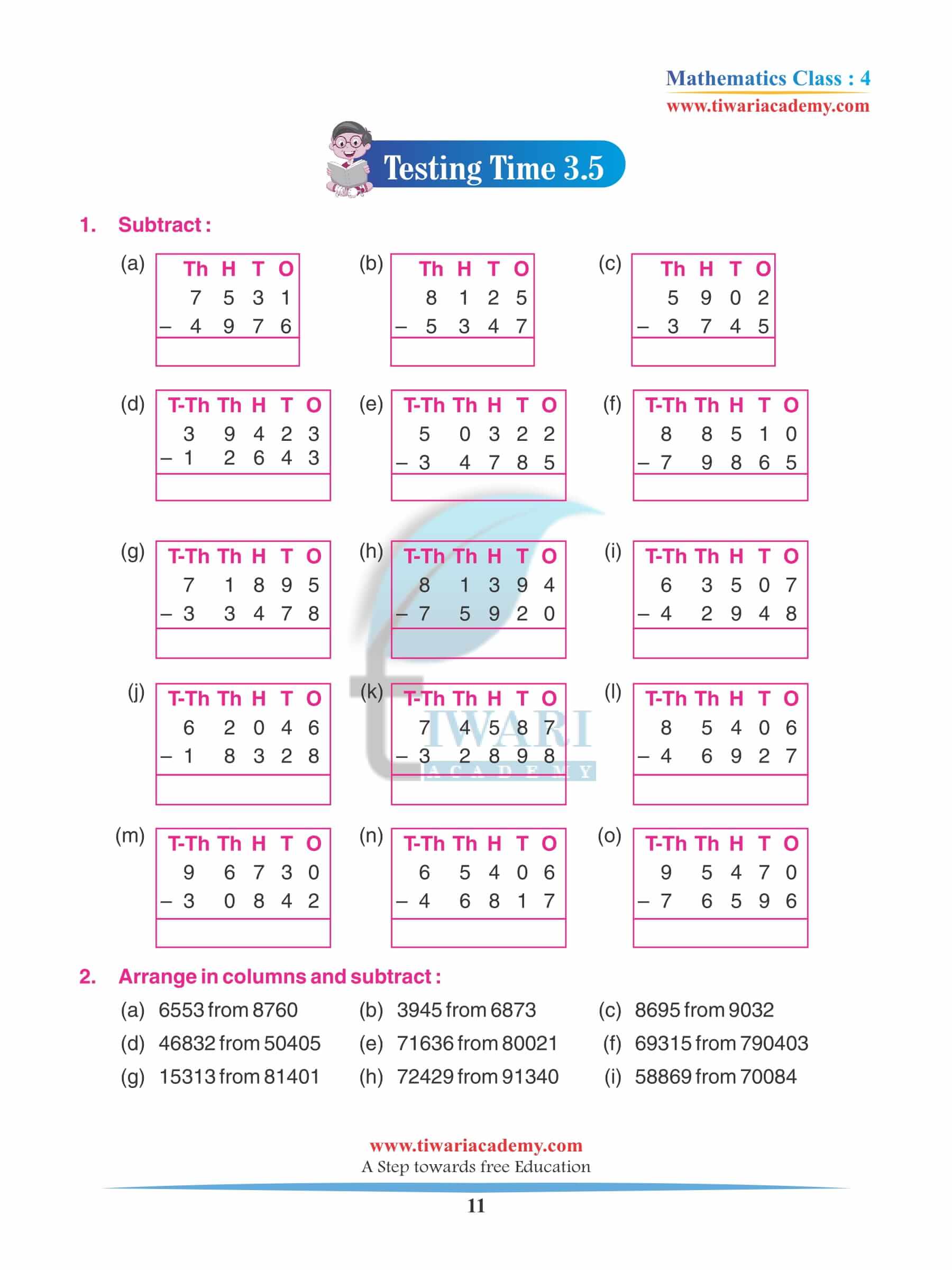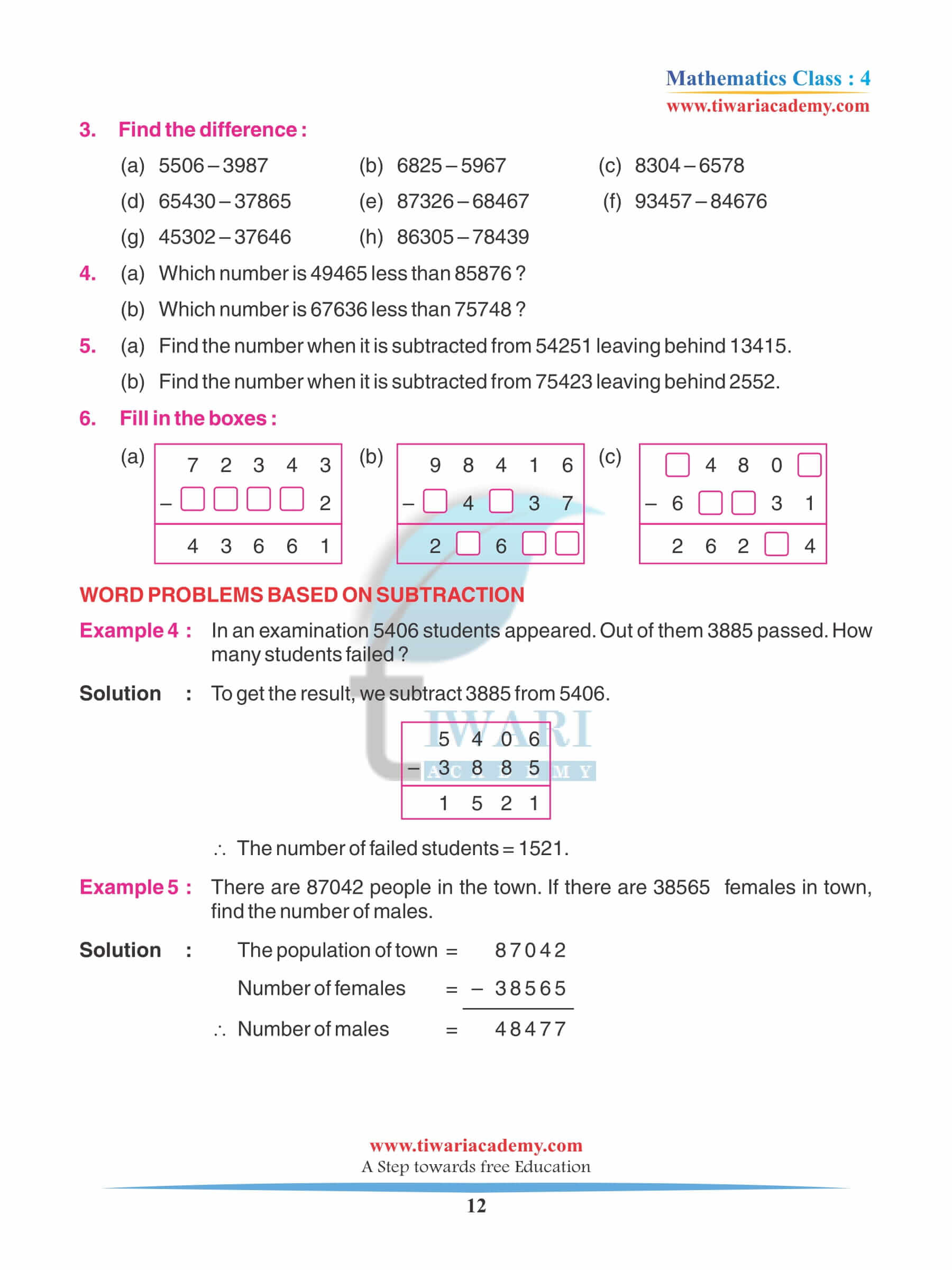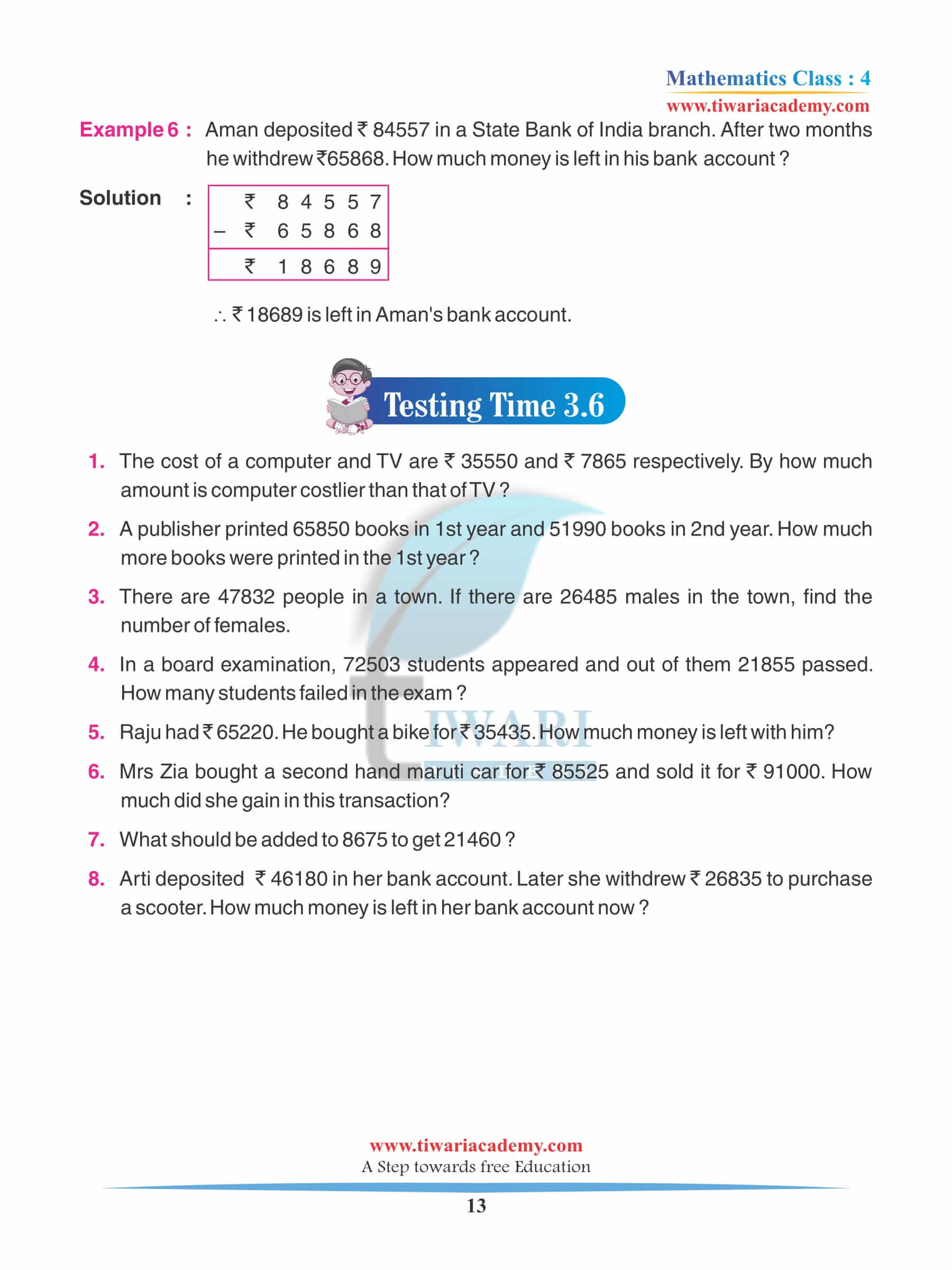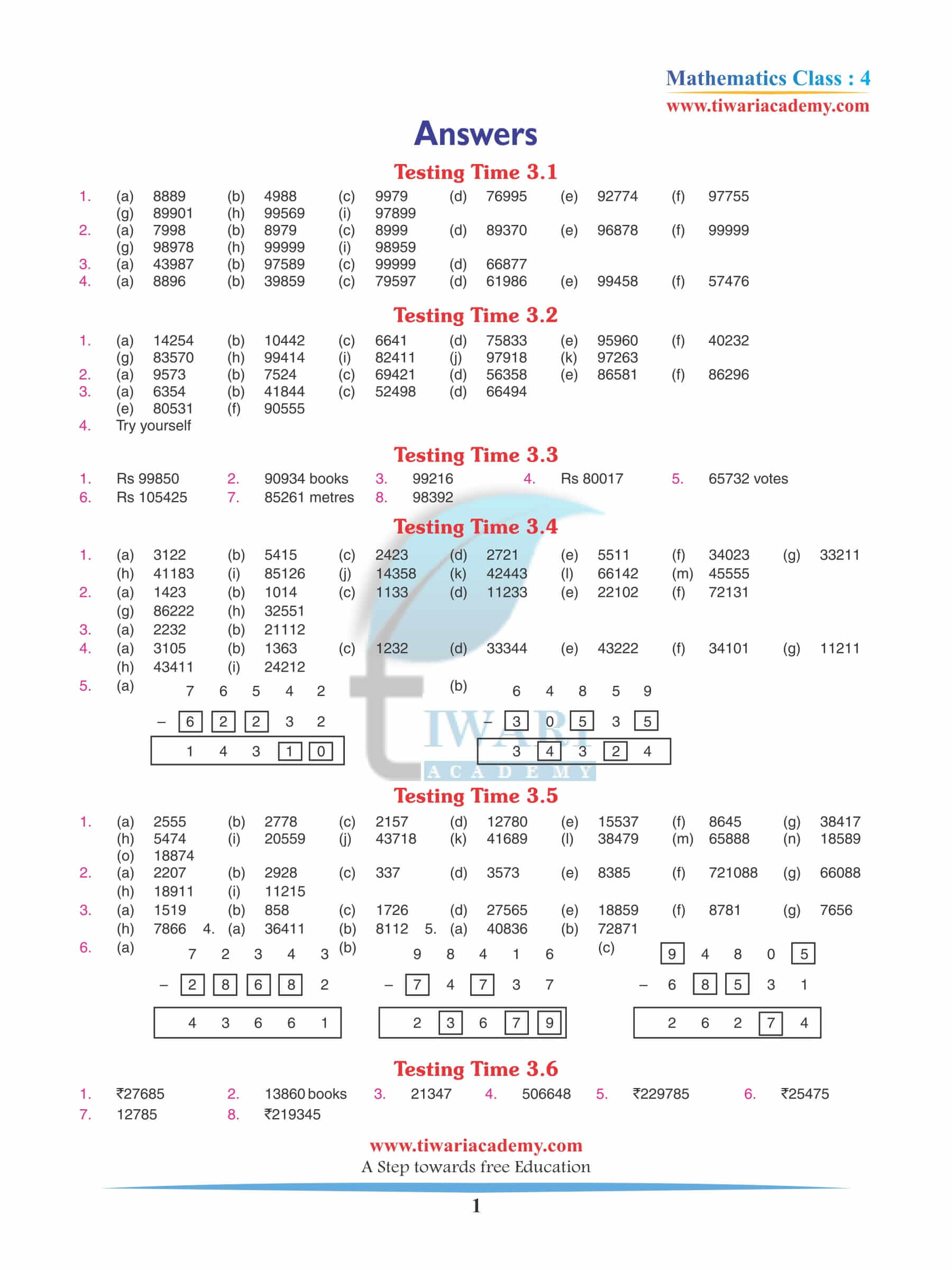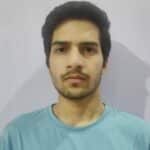NCERT Solutions for Class 4 Maths Mela Chapter 3 Patterns Around Us and Math Magic Chapter 3 A Trip to Bhopal in English and Hindi Medium for session 2025-26. Revision book available here which is helpful during the revision of the chapter. This must be one of the most interesting chapters ever.
Class 4 Maths Mela Chapter 3 MCQ
Class 4 Math Magic Chapter 3 MCQ
Chapter 3 A Trip to Bhopal Solutions
Class 4 Maths Mela Chapter 3 Patterns Around Us Solutions
Page 34
Let Us Count
Gundappa has some land with tall coconut trees.
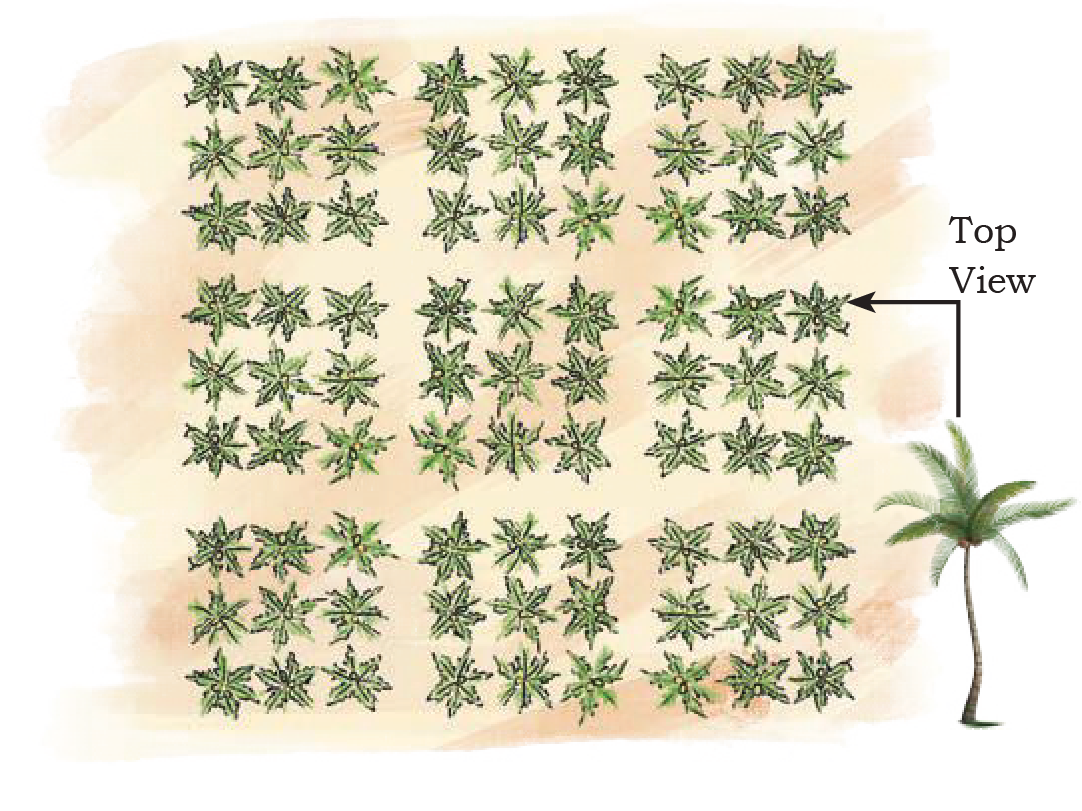
How many coconut tress does Gundappa have?
See Answer81
How do you know?
See AnswerLooking at the image, I can see these are arranged in a grid pattern. Counting the trees, there are 9 trees in each row and 9 rows, so:
9 × 9 = 81 coconut trees
Gundappa has plucked 5 coconuts from each tree. How many coconuts has he plucked?
See AnswerThe problem states that Gundappa plucked 5 coconuts from each tree.
Total coconuts = Number of trees × 5 coconuts per tree
Total coconuts = 81 × 5 = 405 coconuts
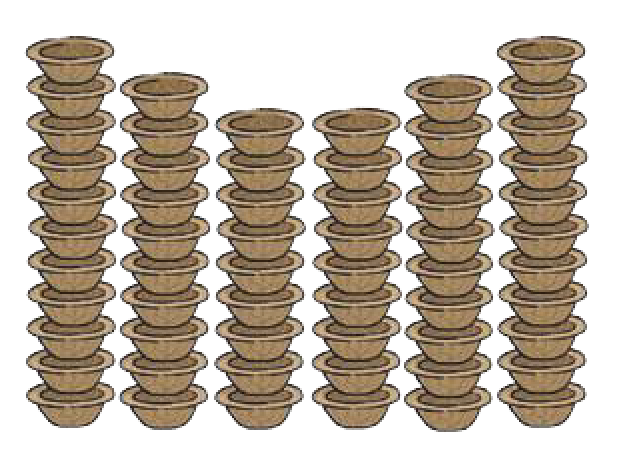
Muniamma makes plates and cups.
Number of cups =
See Answer60

How many coconut laddoos are there in the trays?
See AnswerThere are 12 coconut laddoos are there in the trays.
How many milk pedas are there in the trays?
See AnswerThere are 13 milk pedas in the trays.
Class 4 Maths Mela Chapter 3 Page 35 Questions
Page 35
Patterns with Money
1. Shirley and Shiv arranged their play money in some nice patterns as shown below.
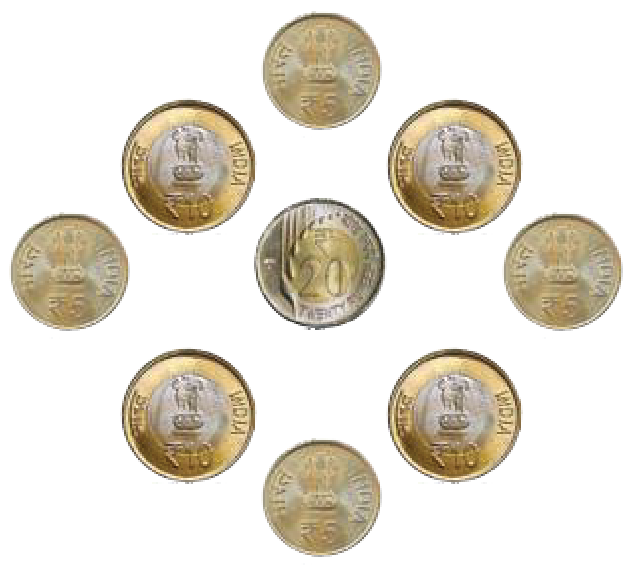
How much money?
See Answer₹80
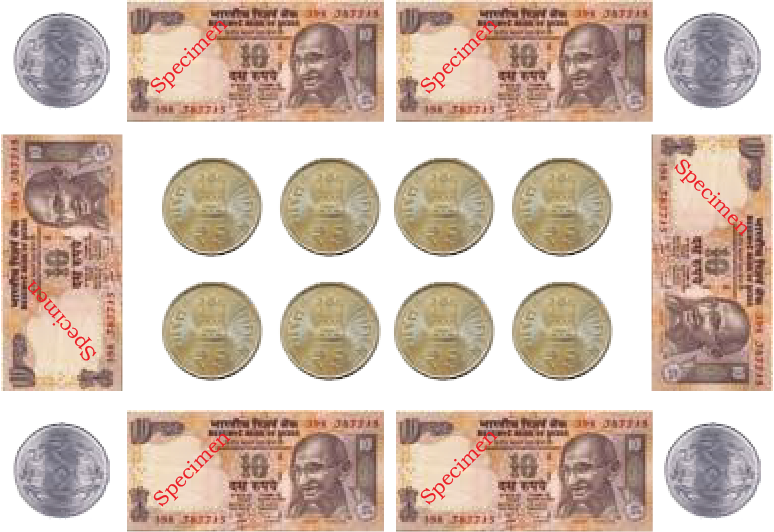
How much money?
See Answer₹108
How did you count them? Discuss in the class.
See AnswerFirst arrangement: ₹80 (Four ₹5 coins, Four ₹10 coins and One ₹20 coins: 4 × ₹5 + 4 × ₹10 + 1 × ₹20 = ₹80)
Second arrangement: ₹108 (Six ₹10 notes, Eight ₹5 coins and Four ₹2 coins: 6 × ₹10 + 8 × ₹5 + 4 × ₹30 = ₹36)
Arrange play money of amounts 1, 2, 5, and 10 to show ₹36, ₹125, and ₹183. Ask your peers to tell how much it is.
See AnswerArranging Play Money
To show ₹36:
One way: 3 × ₹10 notes + 6 × ₹1 coins = ₹36
Another way: 7 × ₹5 notes + 1 × ₹1 coin = ₹36
To show ₹125:
One way: 12 × ₹10 notes + 1 × ₹5 note = ₹125
Another way: 6 × ₹10 notes + 13 × ₹5 notes = ₹125
To show ₹183:
One way: 18 × ₹10 notes + 3 × ₹1 coins = ₹183
Another way: 16 × ₹10 notes + 4 × ₹5 notes + 3 × ₹1 coins = ₹183
TWO WAYS
Shirley and Shiv arranged their coins in the following ways. Write the number of coins in the triangles.
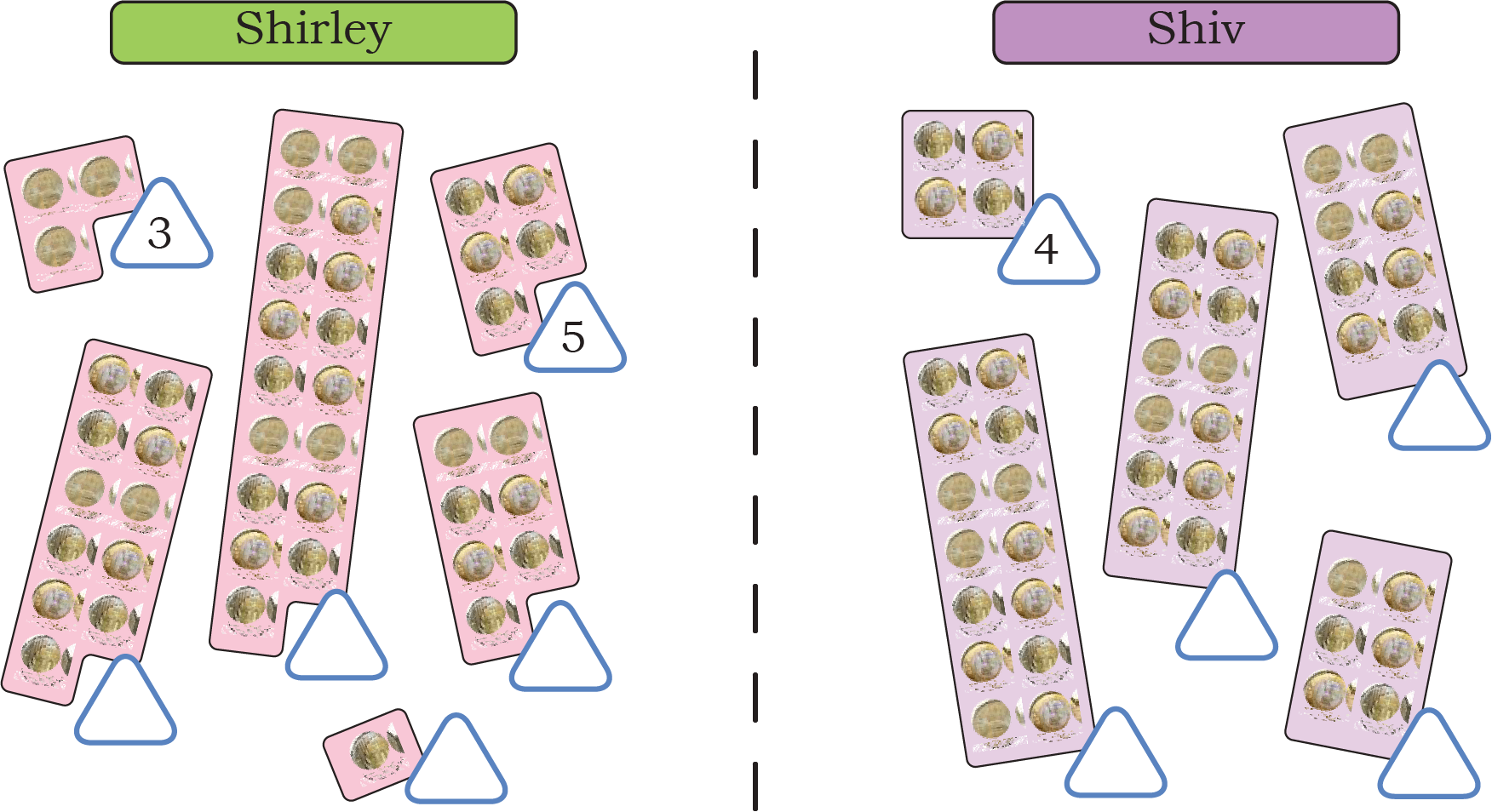
Answer:
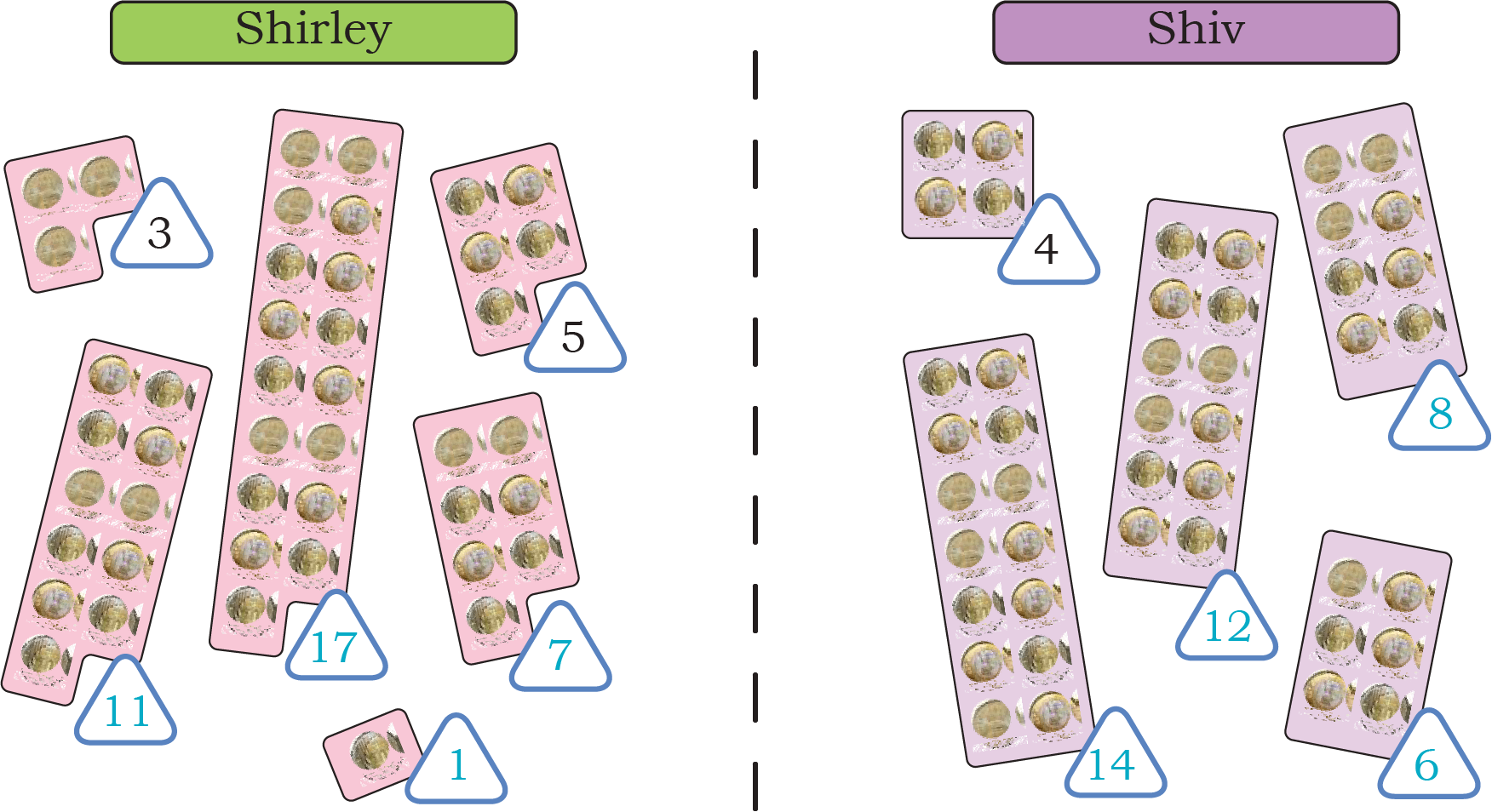
1. Describe Shiv’s arrangement and write his numbers.
See AnswerThe pattern seems to be that Shiv has even numbers of coins in his groups (4, 6, 8, 12, 14)
2. Describe Shirley’s arrangement and write her numbers.
See AnswerThe pattern seems to be that Shirley’s has odd numbers of coins in her groups (1, 3, 5, 7, 11, 17)
3. Shiv has arranged his numbers in pairs. We call such numbers ‘even numbers’.
Shirley’s numbers are called ‘odd numbers’
Identify number between 1 and 20 as even or odd. You may draw the pairing arrangement of the number.
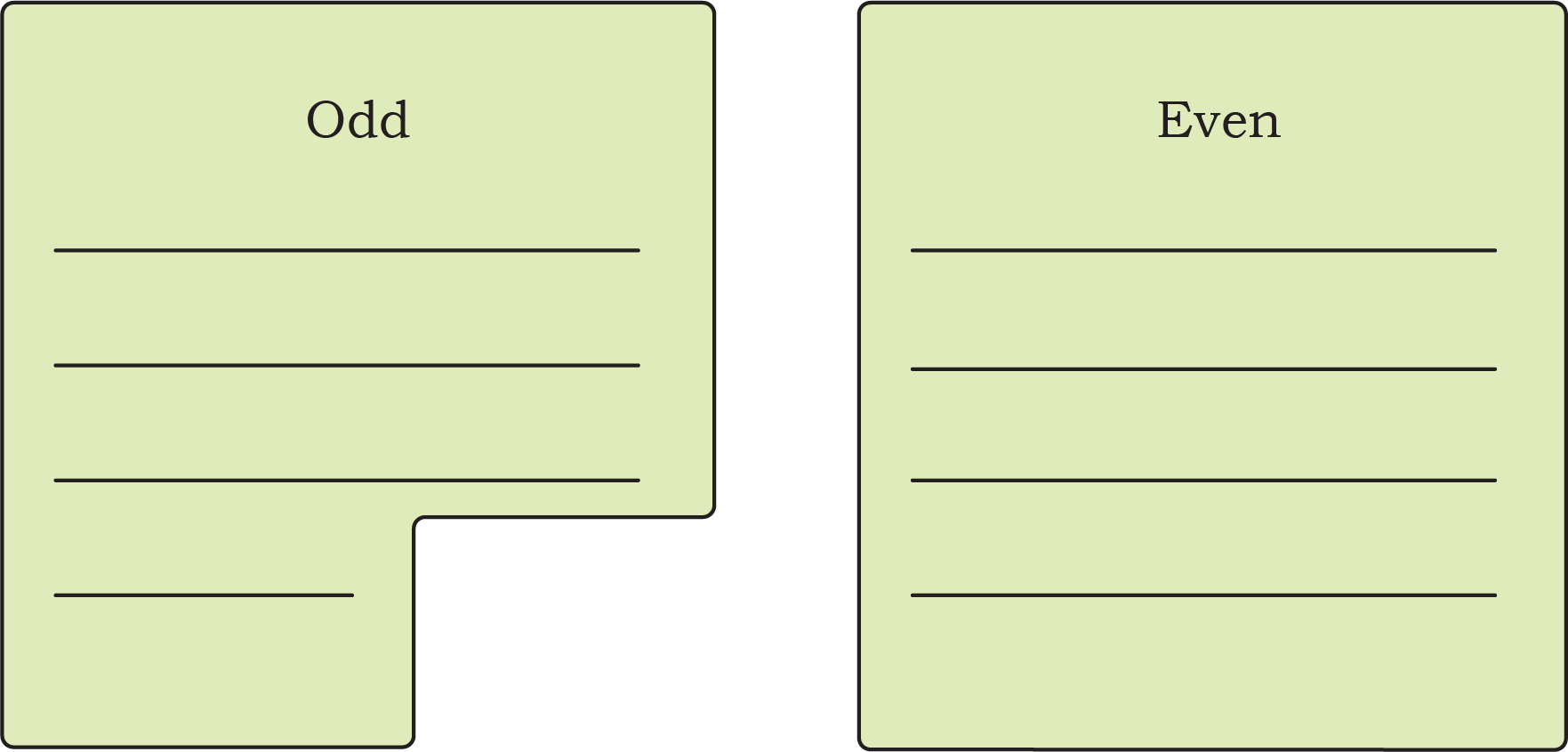
See AnswerOdd: 1, 3, 5, 7, 11, 17
Even: 4, 6, 8, 12, 14

4. Do you think all numbers in the times-2 table are even?
See AnswerYes, all numbers in the times-2 table are even because multiplying any number by 2 always gives an even number.
Class 4 Maths Mela Chapter 3 Page 37 Questions
Page 37
Crayons Arrangement
1. Circle the odd numbers and put a square around each even number. Use the crayons arrangement, if needed.
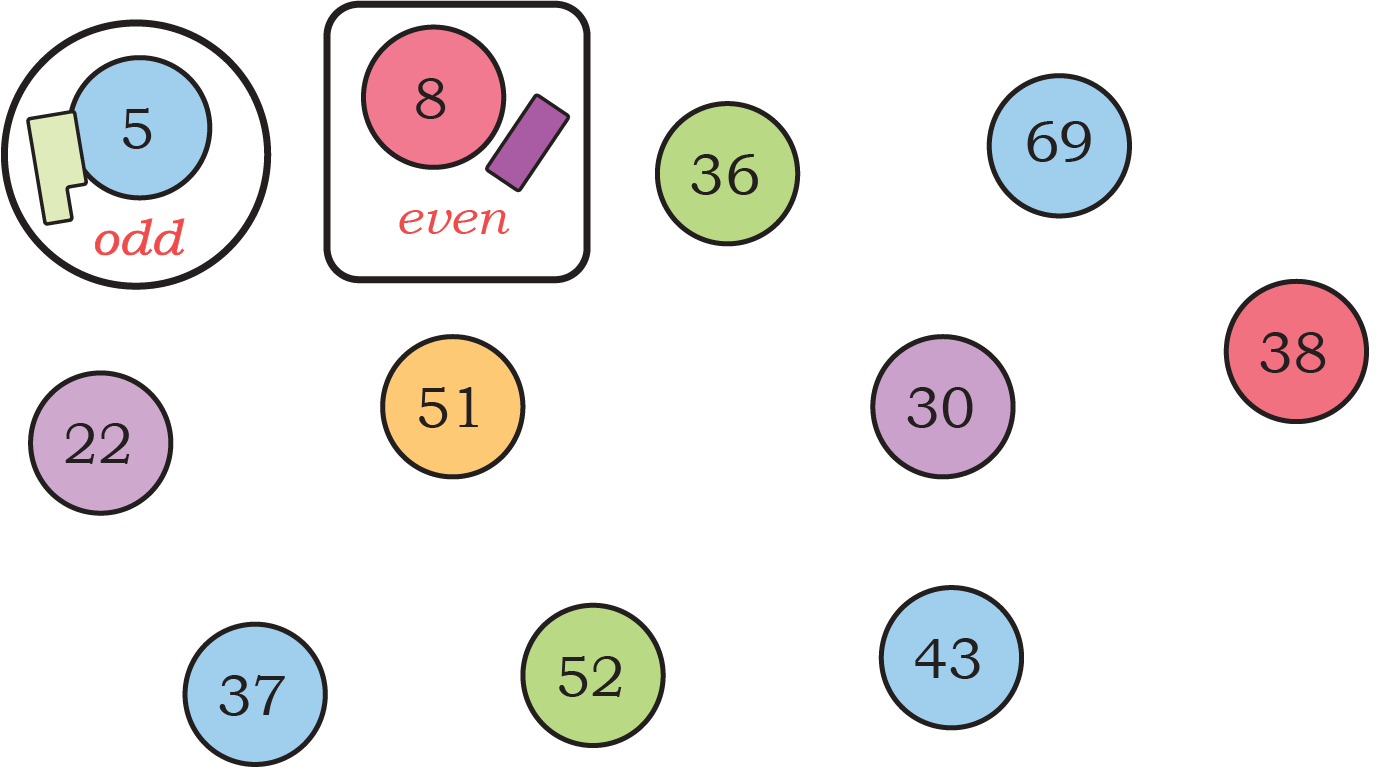
See AnswerCircle odd numbers and square even numbers:
Odd numbers (circle): 5, 51, 43, 37, 69
Even numbers (square): 30, 38, 52, 22, 8, 36
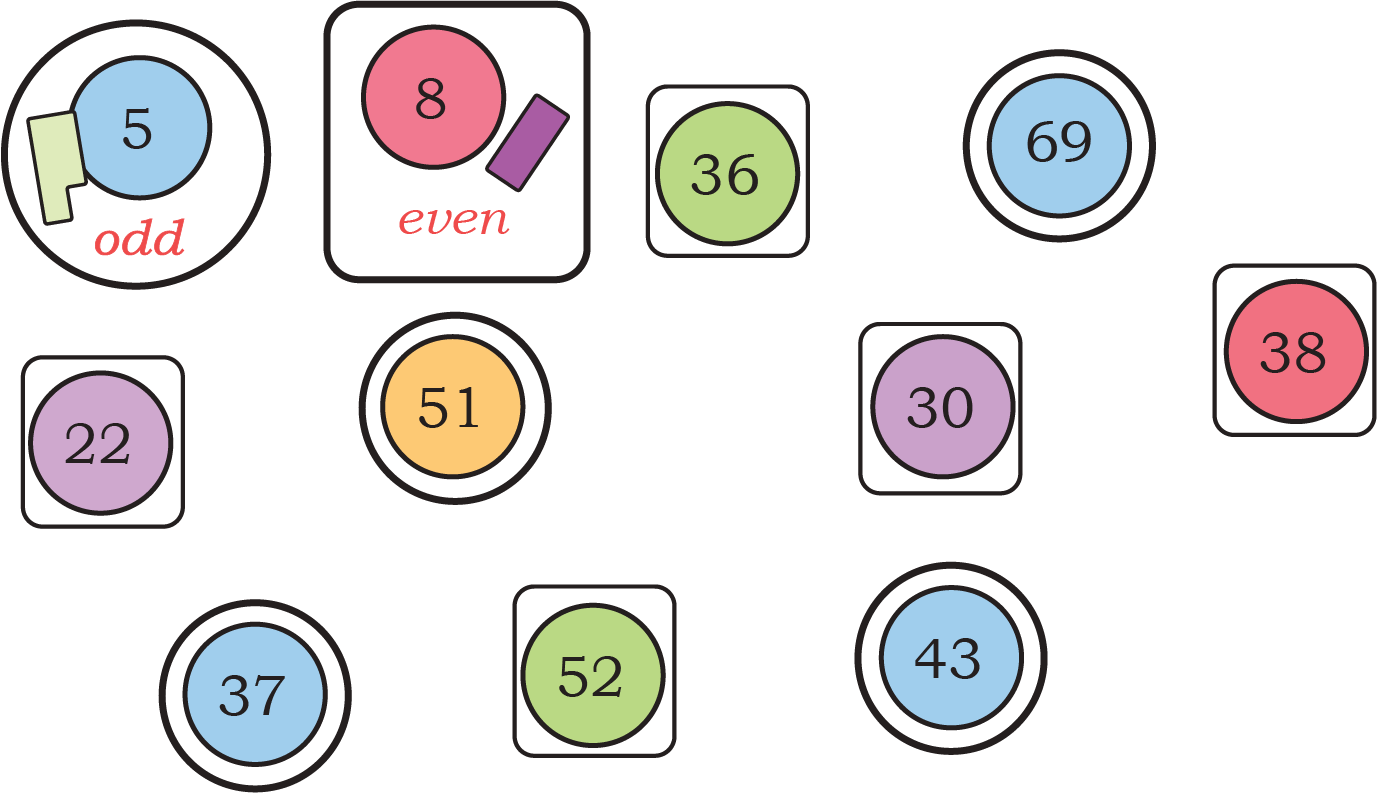
2. Which numbers are even and which are odd? Discuss.
See AnswerEven numbers are those that can be divided by 2 without a remainder. They end in 2, 4, 6, or 8.
Odd numbers are those that leave a remainder of 1 when divided by 2. They end in 1, 3, 5, 7, or 9.
3. Shirley observes an interesting even-odd pattern in the page numbers of her Maths book.
Explore your textbook and find out what Shirley has seen. Draw a square on the even numbers. Put a circle on the odd numbers.
See AnswerShirley notices that both the numbers, before and after an odd number, are even.
4. Identify which of the following numbers are even and which are odd. Explain your reasoning.

See AnswerOdd numbers: 67, 415, 99
Even numbers: 30, 46, 78, 300, 154
5. Make two 2 -digit numbers using the digits 1 and 6 without repetition.
See AnswerThe two 2-digit numbers using digits 1 and 6 without repetition are:
16 (which is even because it ends in 6)
61 (which is odd because it ends in 1)
6. Identify the numbers as even or odd. Now choose any two digits and make 2-digit numbers in such a way that the numbers are even.
See AnswerTo make 2-digit numbers that are even, we need to choose digits where the last digit is even (0, 2, 4, 6, 8). Two possible examples:
24 (using digits 2 and 4)
86 (using digits 8 and 6)
7. Are there more even or odd numbers between 1 and 100?
See AnswerBetween 1 and 100, there are:
50 even numbers (2, 4, 6, …, 100)
50 odd numbers (1, 3, 5, …, 99)
So there are an equal number of even and odd numbers between 1 and 100.
8. Shirley notices that both the numbers, before and after an odd
Shirley notices that both numbers before and after an odd number are even.
See AnswerThis is true because odd numbers are always surrounded by even numbers in the number sequence.
For example: 6 (even), 7 (odd), 8 (even)
9. Shiv wonders if both the numbers, before and after an even number, will be odd. What do you think? Check and discuss.
Shiv wonders if both numbers before and after an even number will be odd.
See AnswerYes, this is true! An even number is always surrounded by odd numbers.
For example: 5 (odd), 6 (even), 7 (odd)
10. Choose any 10 numbers in order without skipping any (consecutive numbers). Write whether they are even or odd below each number. What do you notice? Discuss.

See AnswerFor the 10 consecutive numbers starting with 20 and 21: 20 (even), 21 (odd), 22 (even), 23 (odd), 24 (even), 25 (odd), 26 (even), 27 (odd), 28 (even), 29 (odd)
The pattern is that even and odd numbers alternate – when you list consecutive numbers, you always get an alternating pattern of even, odd, even, odd, and so on.

NCERT Solutions for Class 4 Maths Chapter 3 A Trip to Bhopal
Class 4 NCERT Maths Chapter 3 Excitement of Education Trip
The bus trip from school to some other places is one of the most joyous moments for every child in the class. There are several reasons for that firstly it is from school which means that no study and then everyone likes to go to someplace new. This chapter is about some trip like this. Which is educational and also sometimes ask us about preparation so that they can accommodate all the students and the problems they were facing during the preparation as the children were all excited about the trip.
Class 4 NCERT Maths Textbook Chapter 3 Sharing of Lunch
Lunch hour is the most favorite time of the school time because at that time we will get chance to eat all the food that our family packed for us and some of us shares it with our friends so that all of us get something new to eat. Then you will also read about the interesting conversation of children riding the boats.
CBSE Class 4 NCERT Maths Chapter 3 Practice Time
This chapter is all that interesting and but they do not forget the Practice time because you have solved all the questions in this chapter. So you have to complete the practice so that the method that you have used in this chapter will not forget.
Did you find chapter 3 of Maths NCERT first short story funny?
There was confusion with the number of children on the trip and then the bus that supposes to come to take them came but a smaller one. That confusion is the hilarious part of the story. Then students are given the task to complete the story by calculation.
What are the main skills that students of class 4th will develop in unit 3 of Maths NCERT?
There are several things that are given in the chapter like calculation and time then the stories about the historical caves that provide information about the place and also history along with the conversation students had was interesting. Though students will learn about the calculation and time in the chapter to find out the answers.
Did you find chapter 3 of class 4th creatively created?
In chapter 3 you will be able to find out multiple short stories were created and then left with calculation rather than creating a story and at the end of it exercise you will be able to find out both of them there. That can actually help the student to study without giving them pressure.
